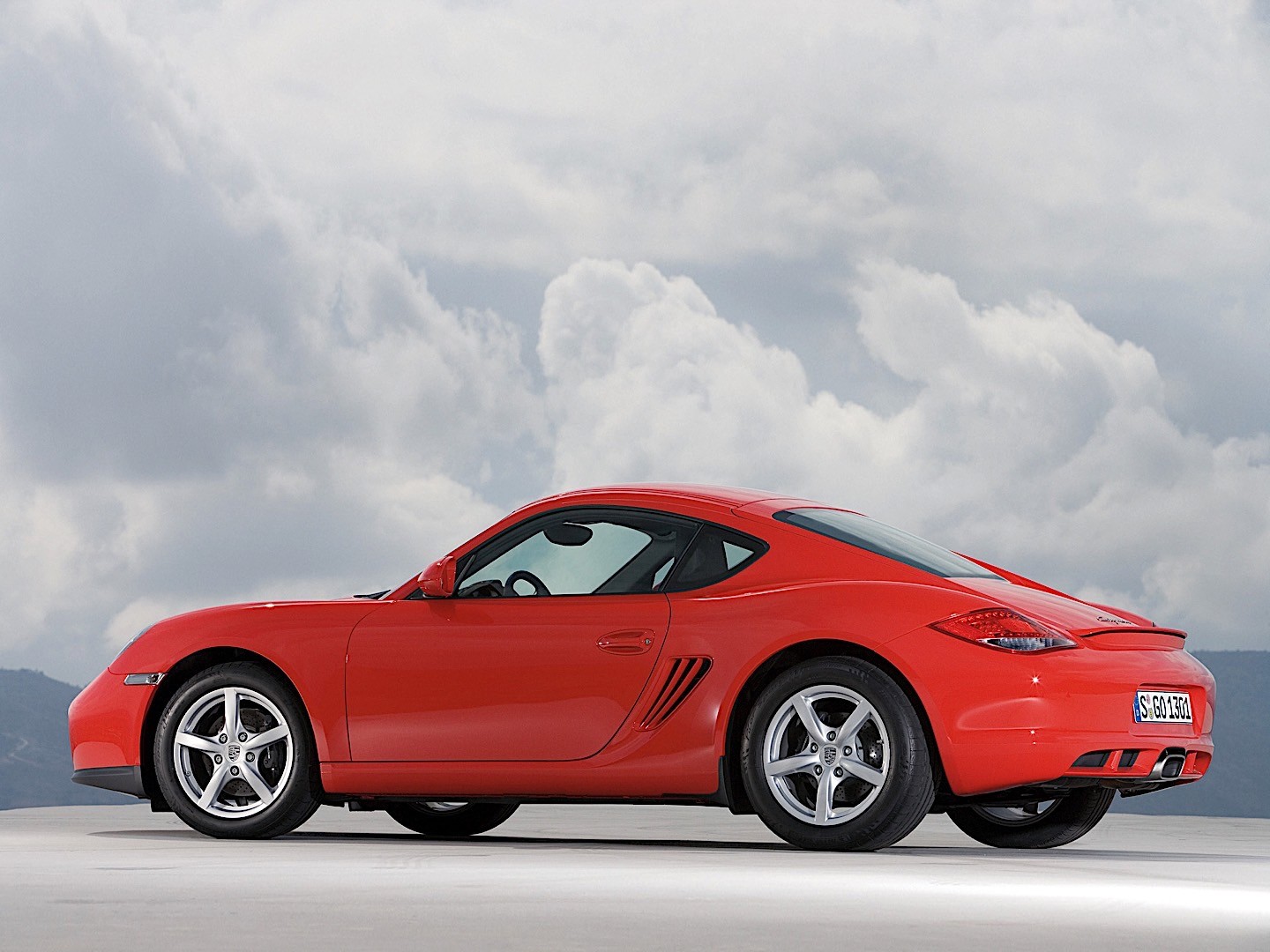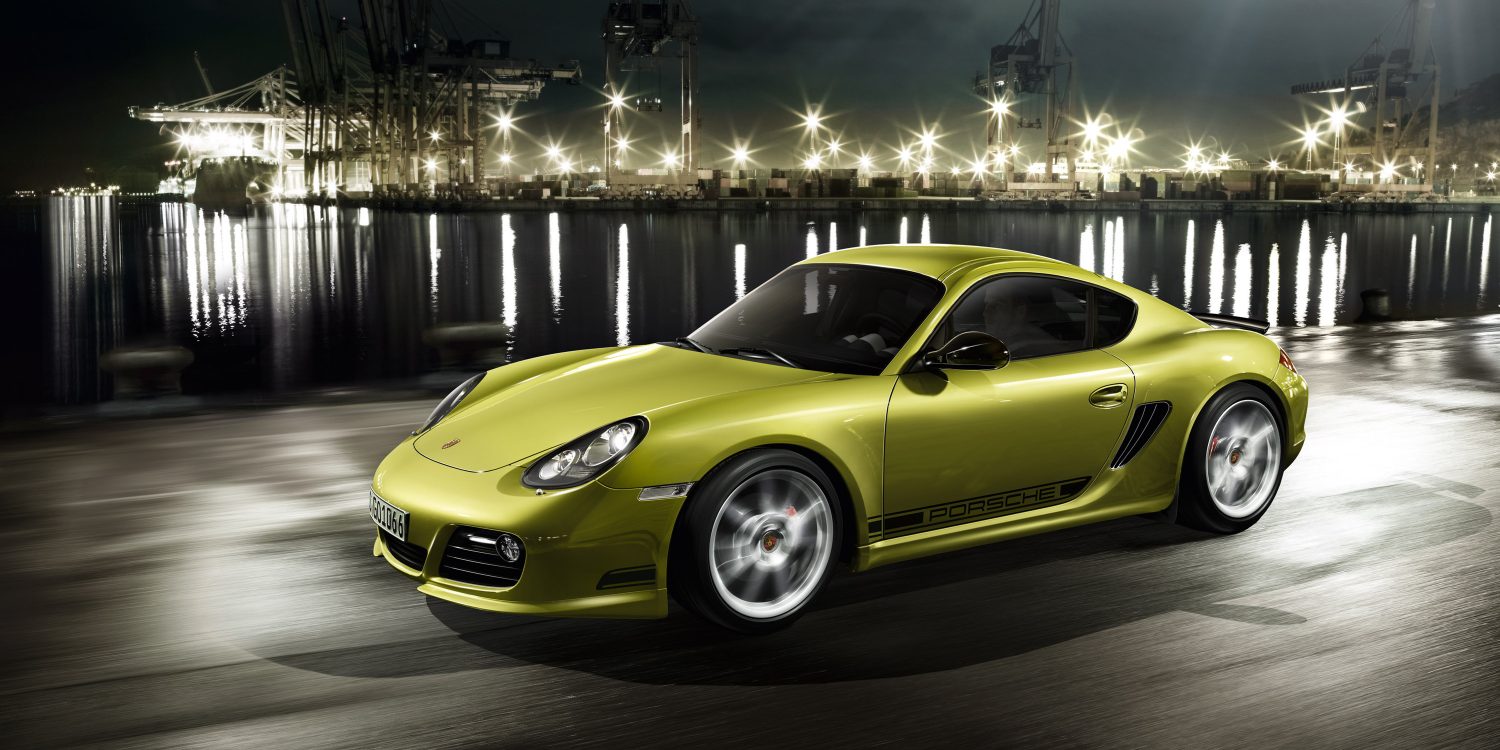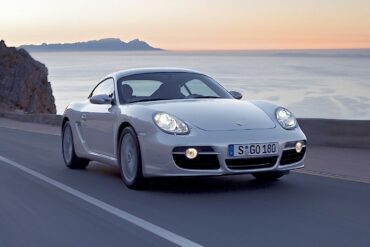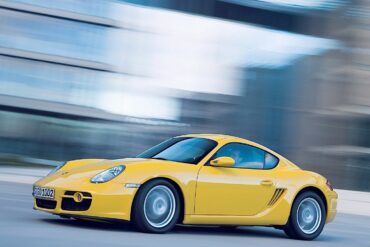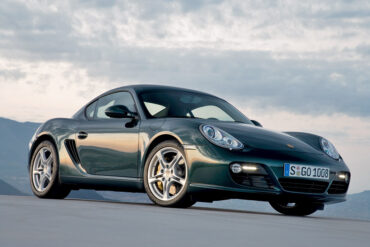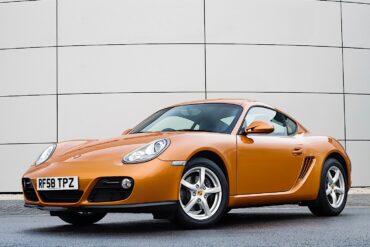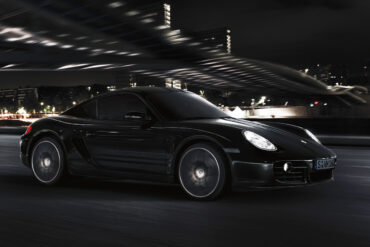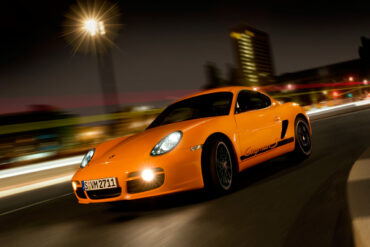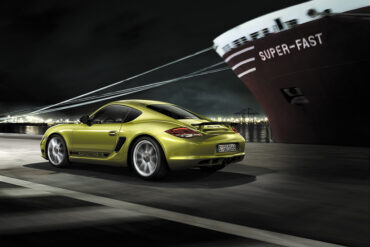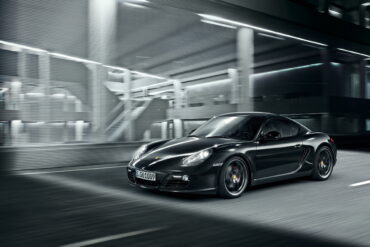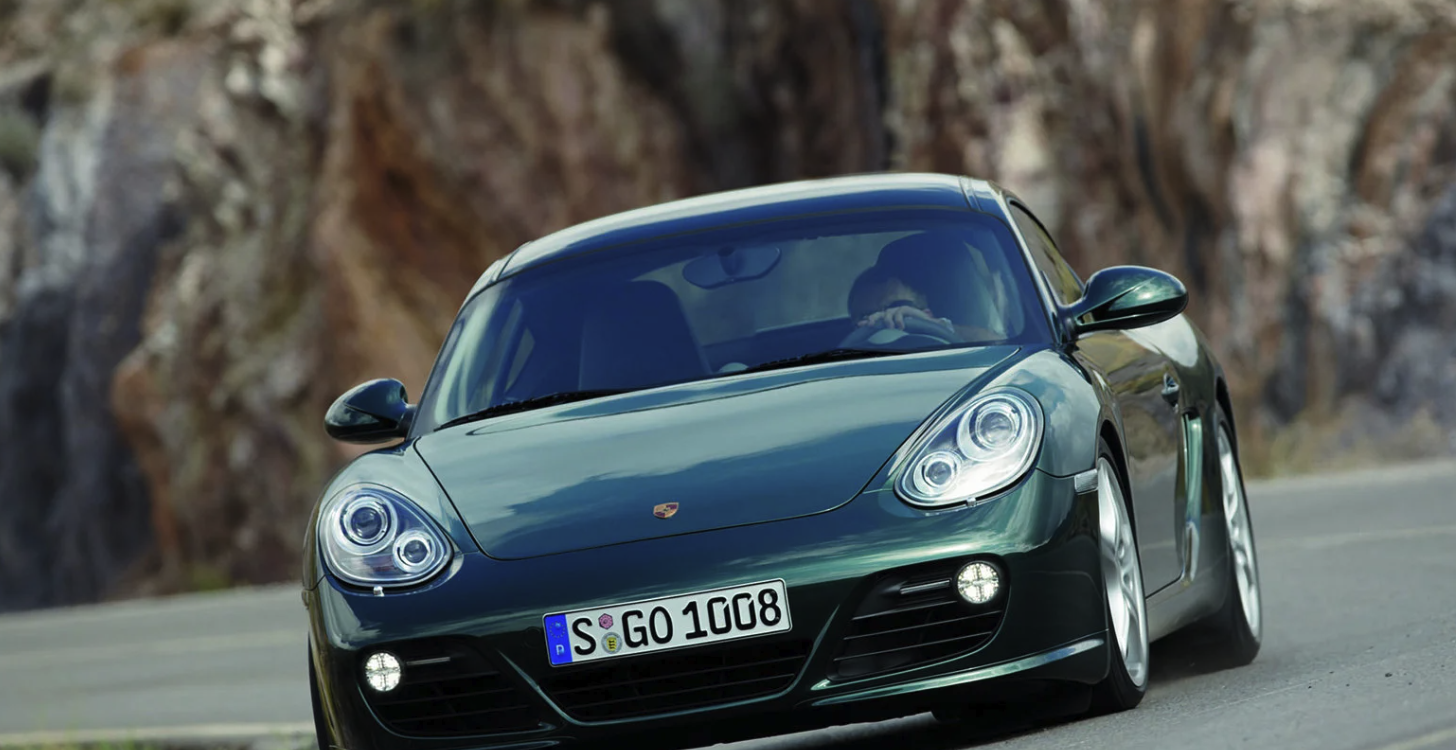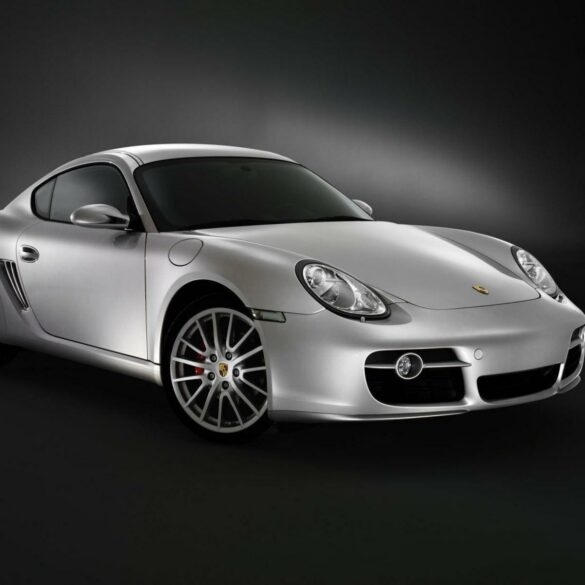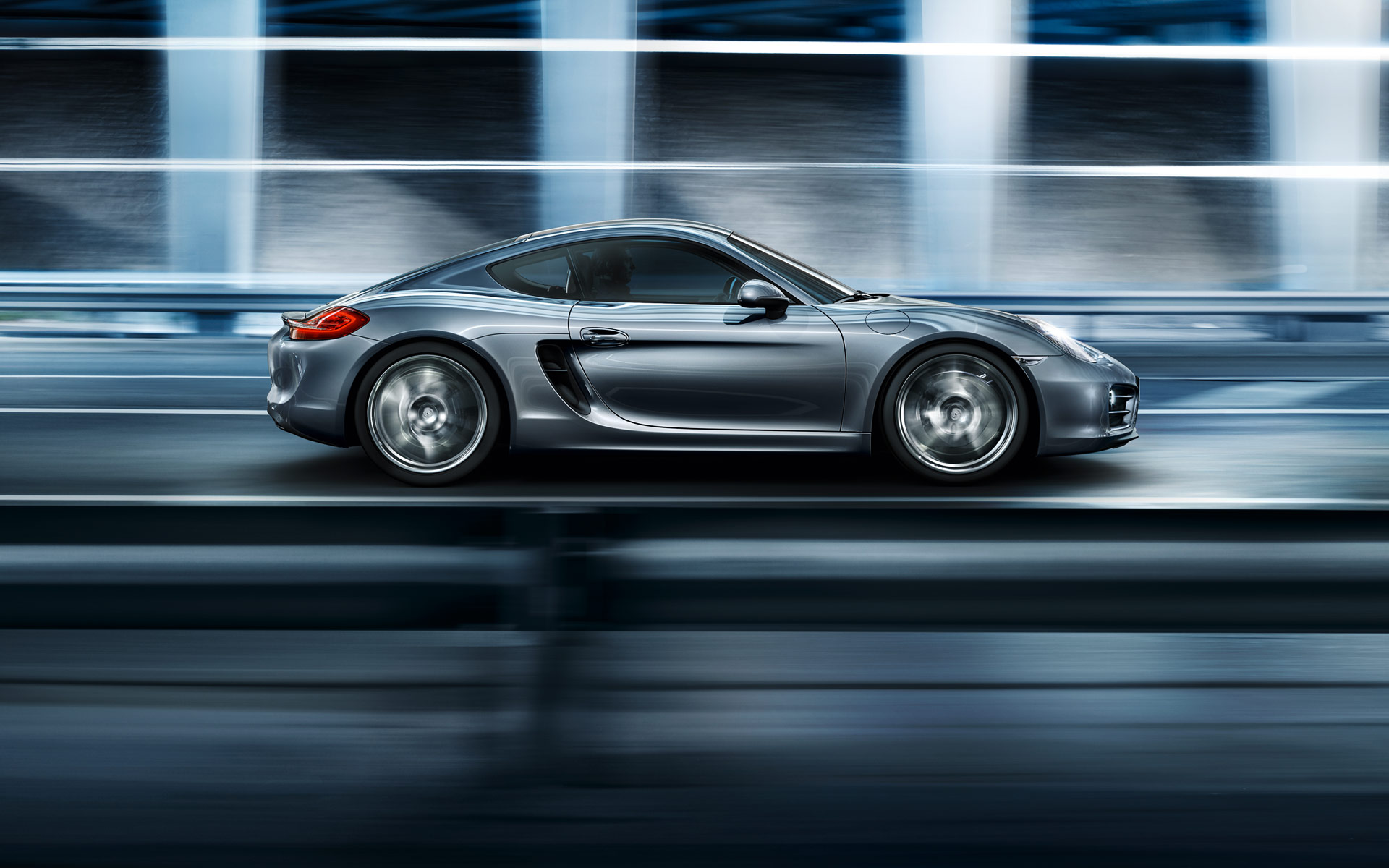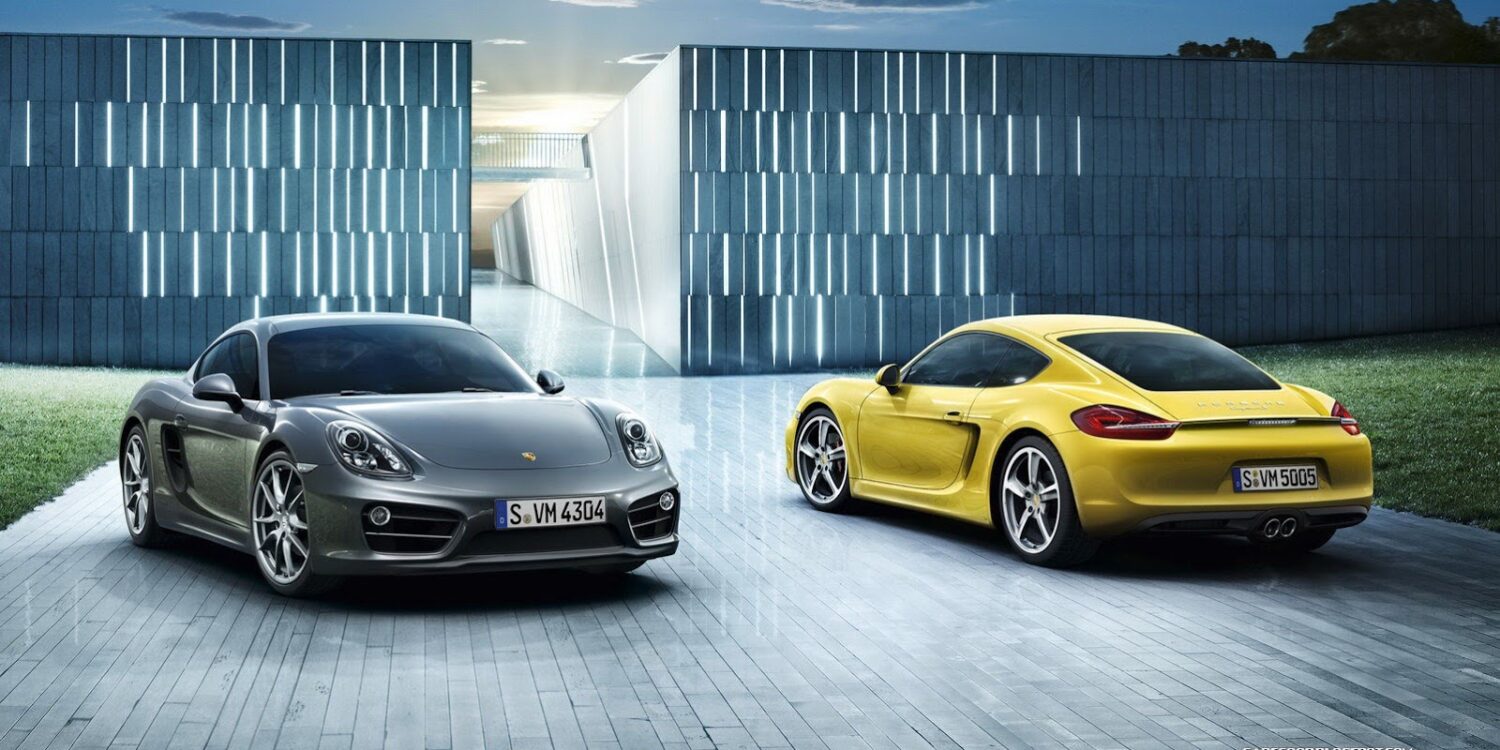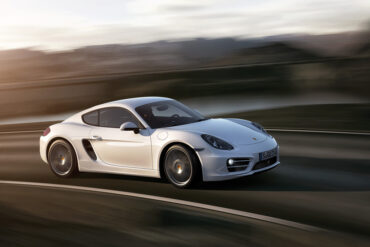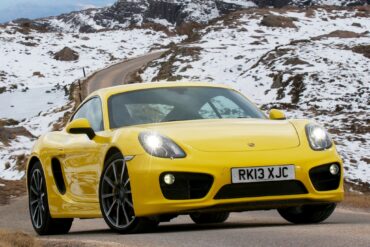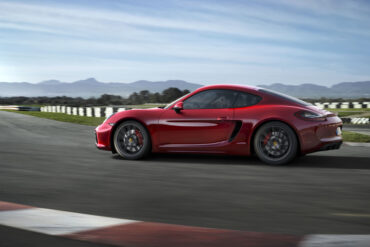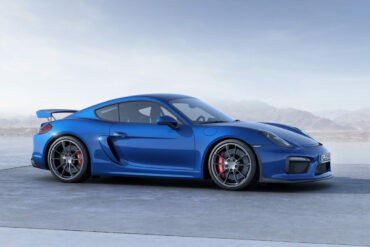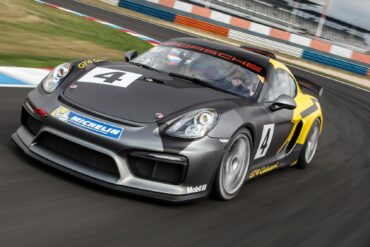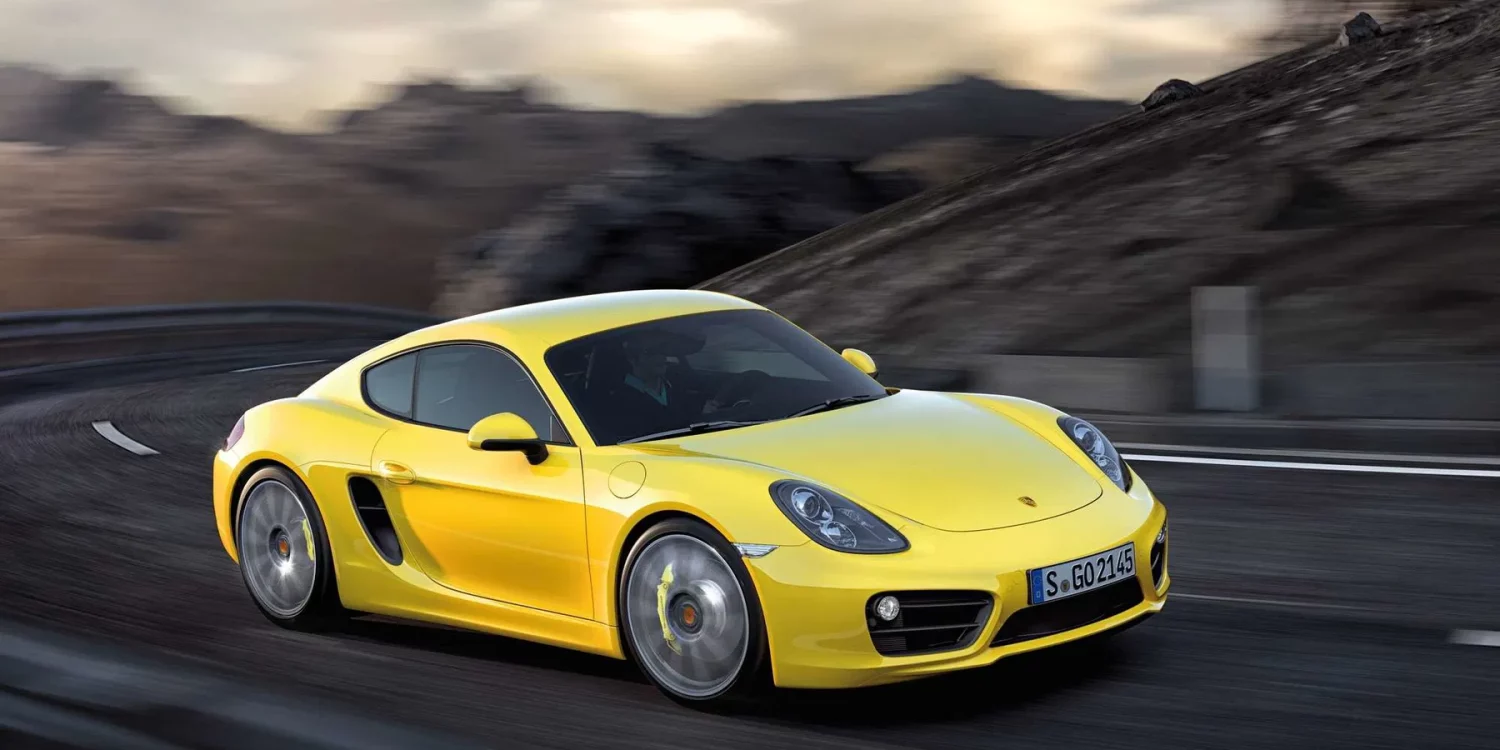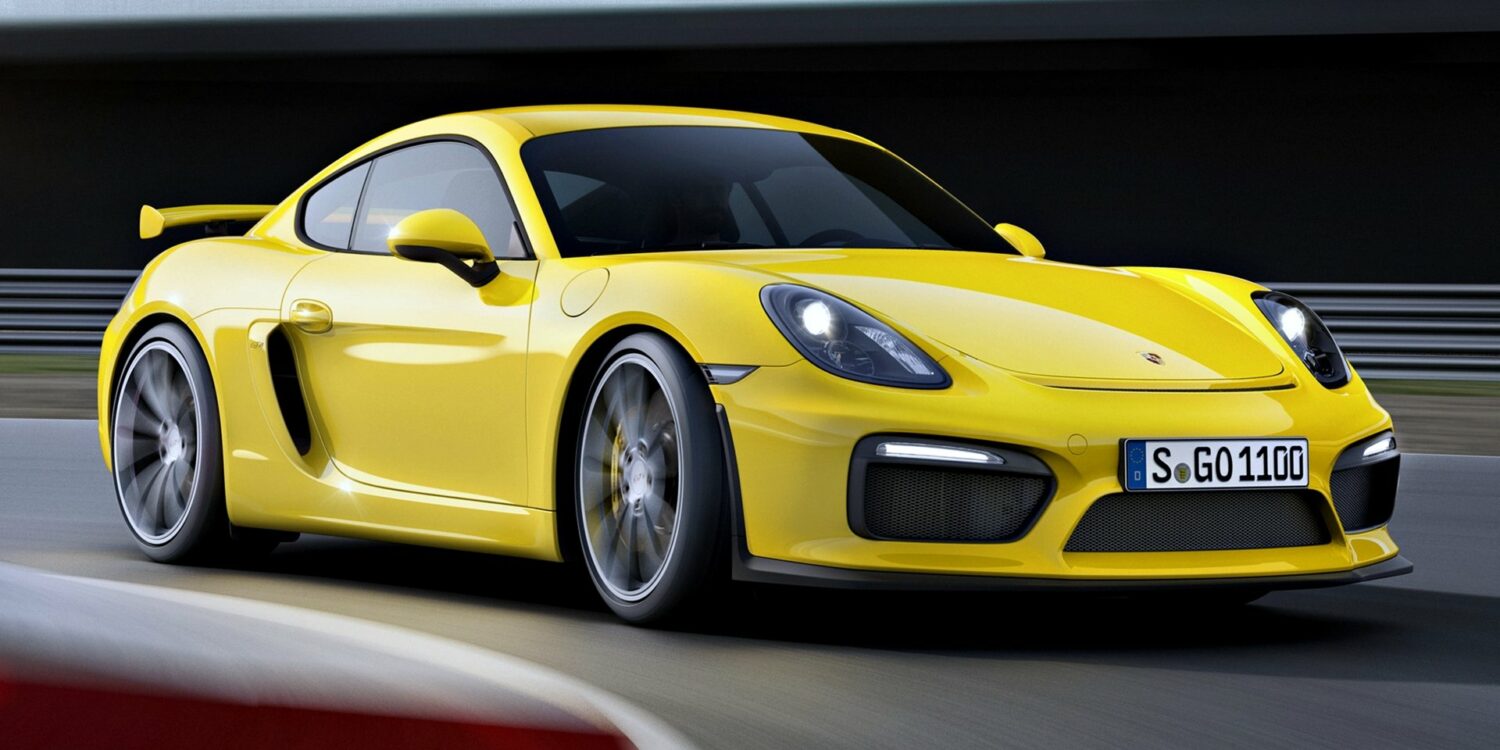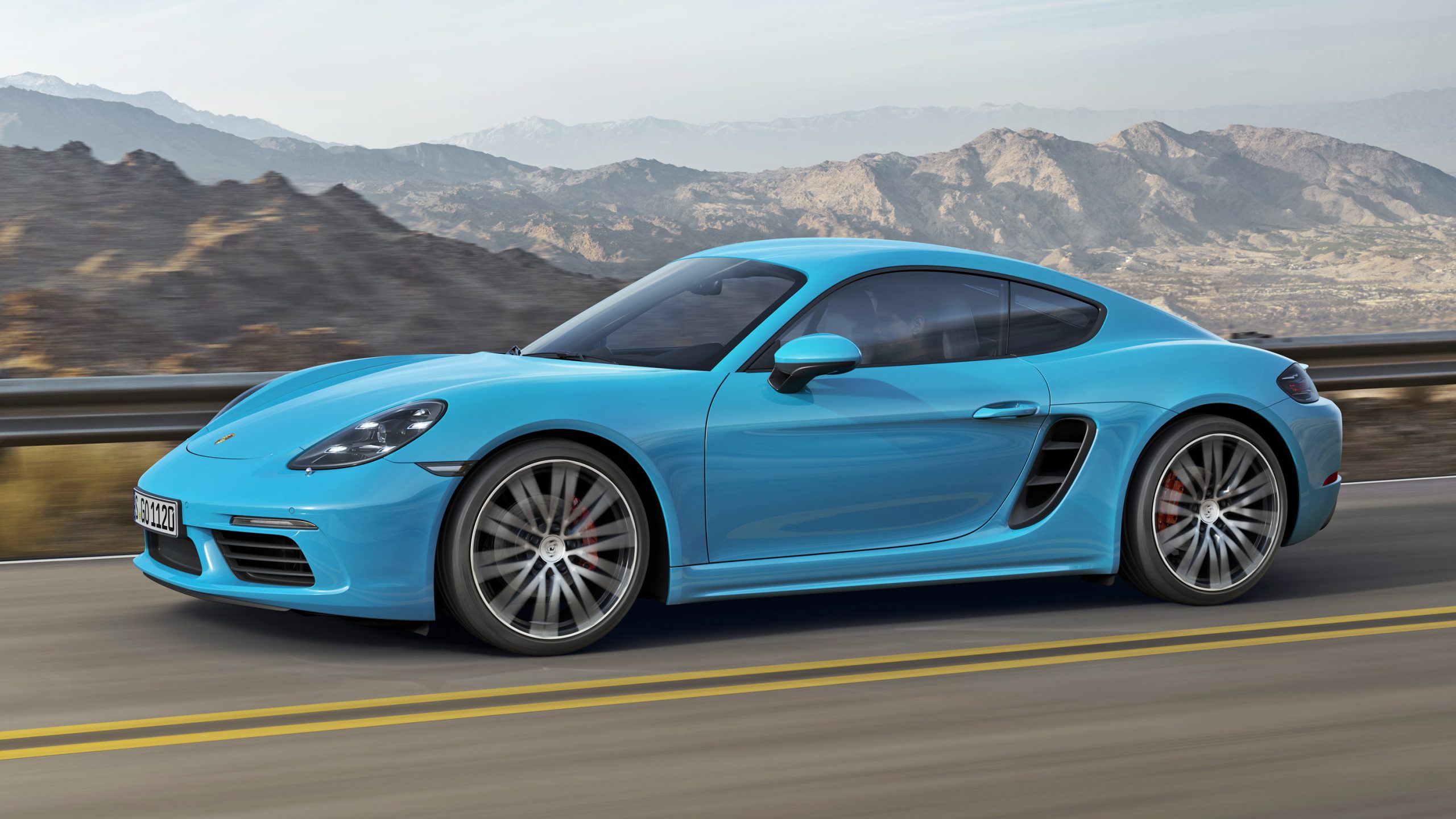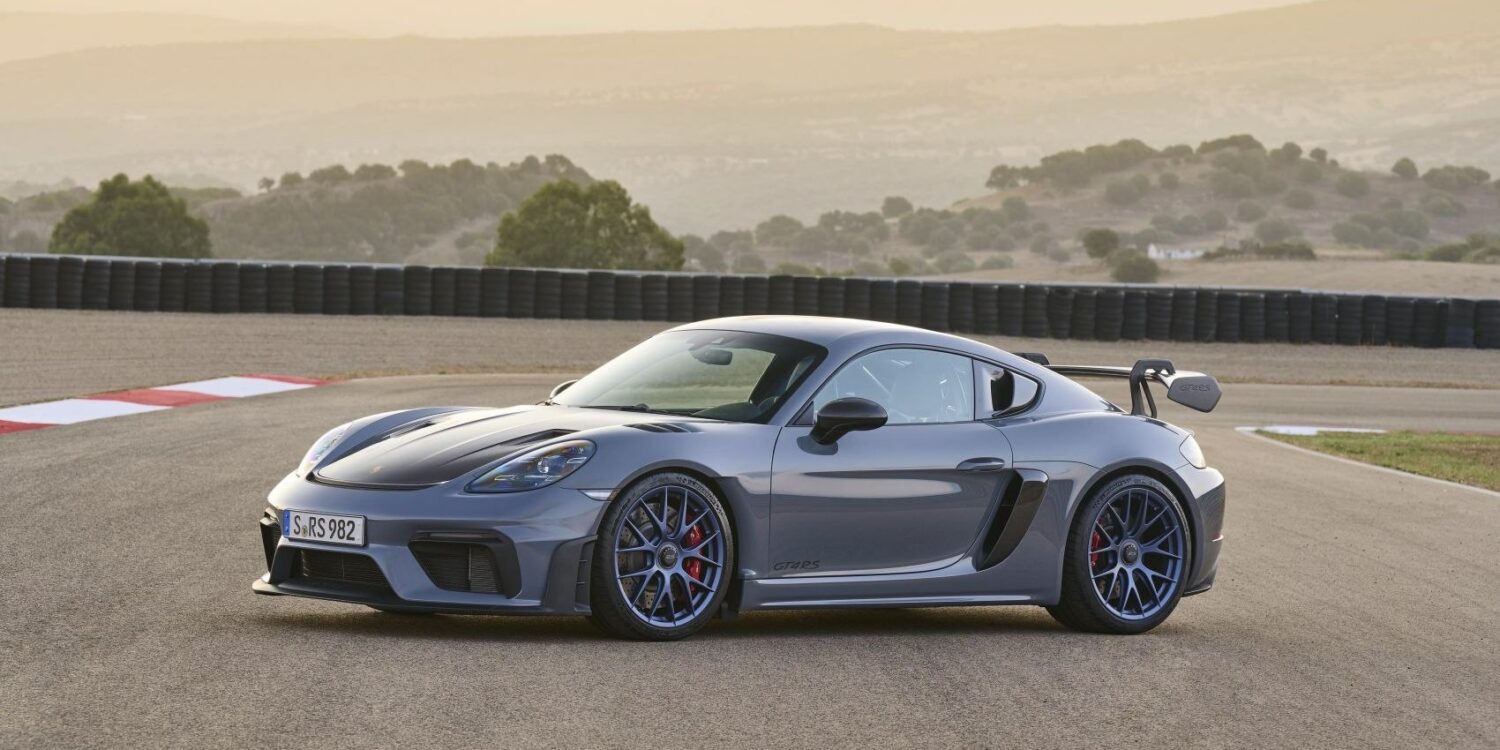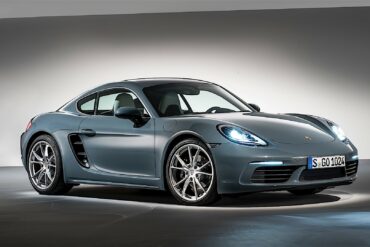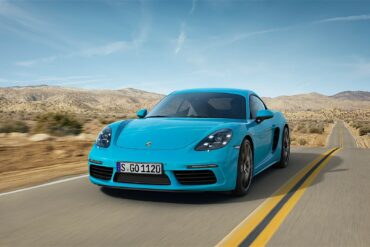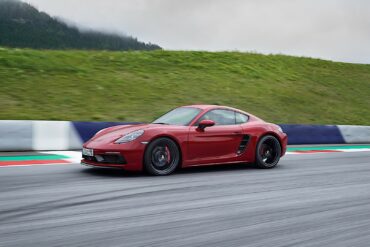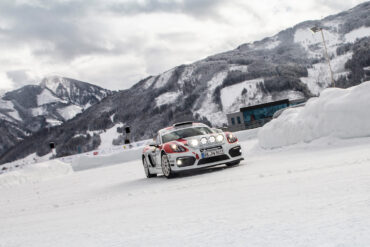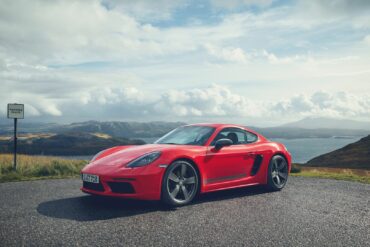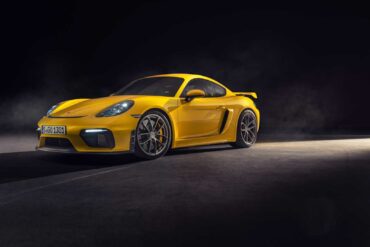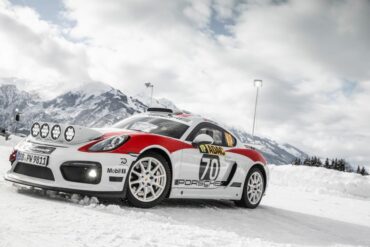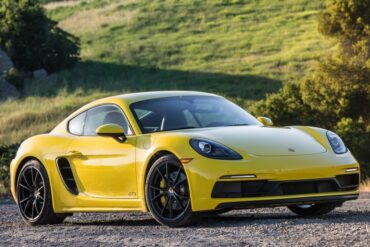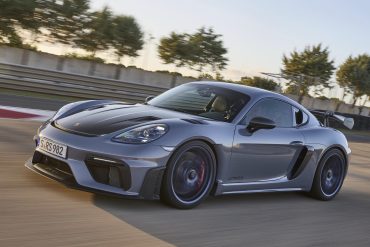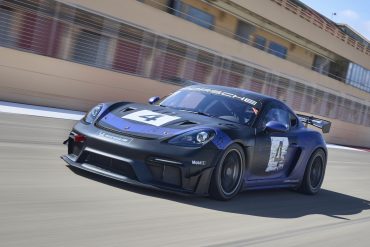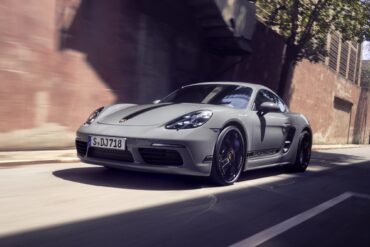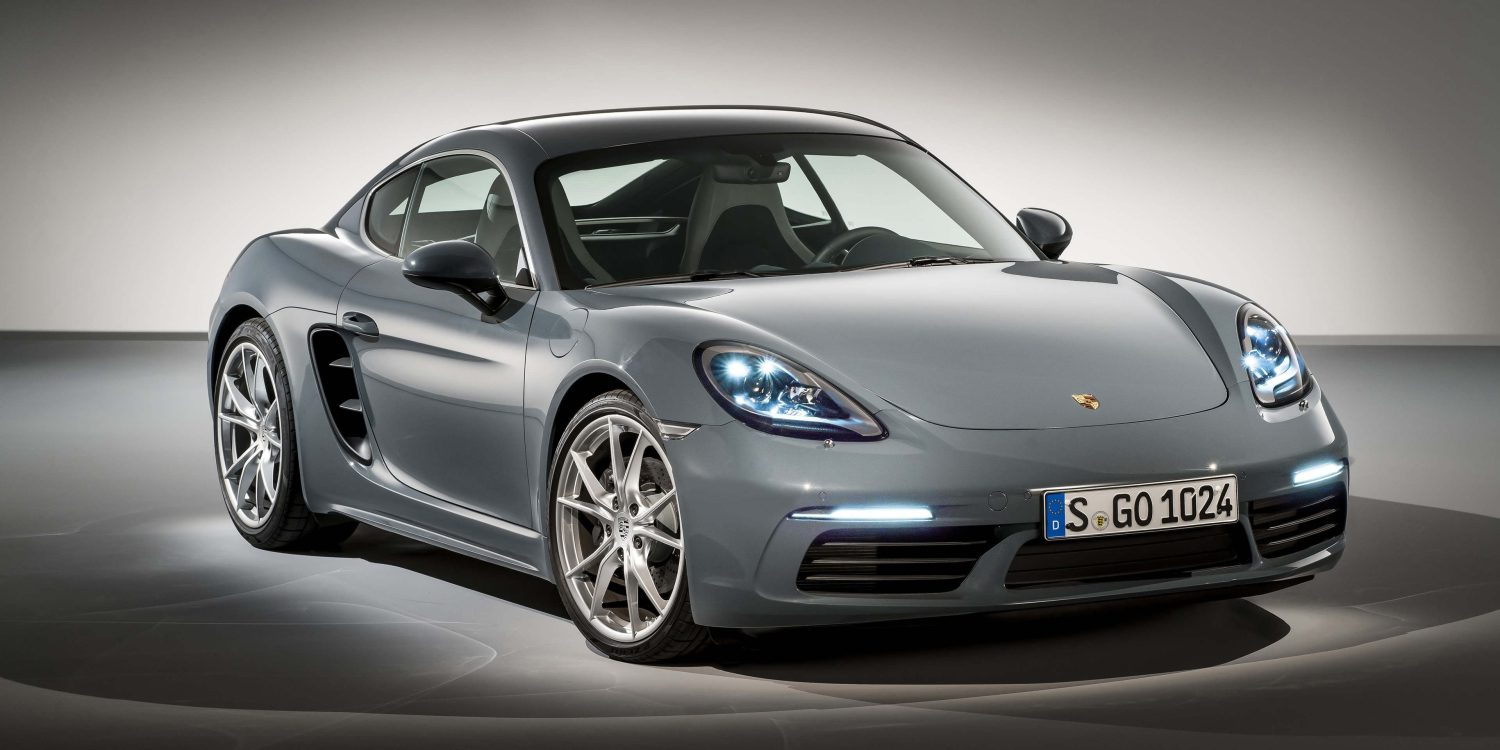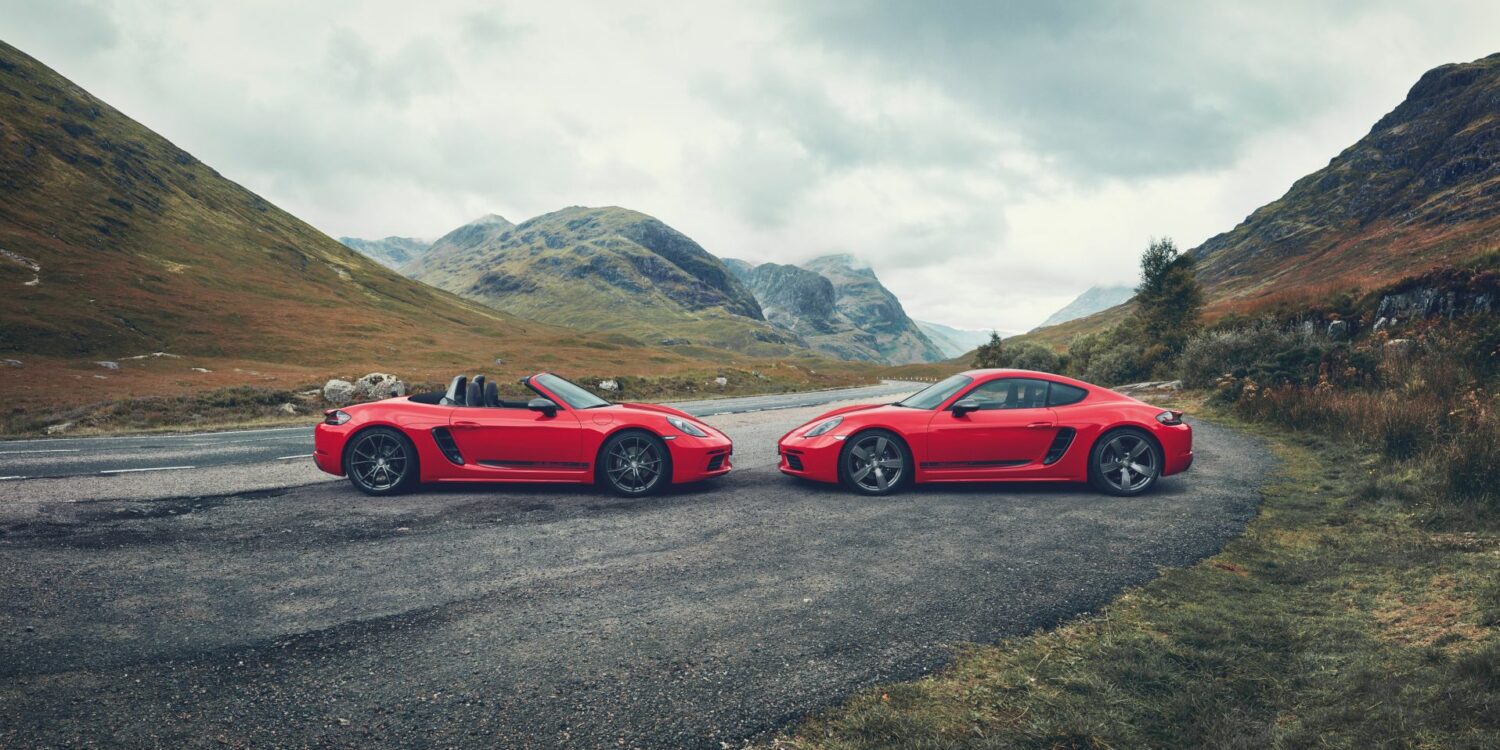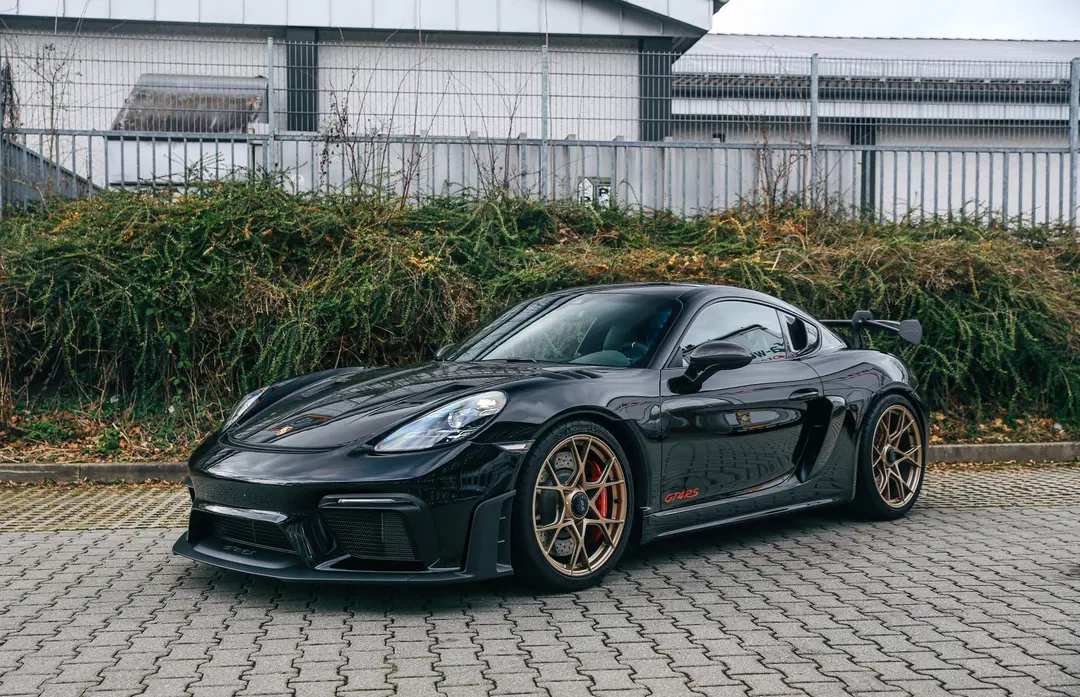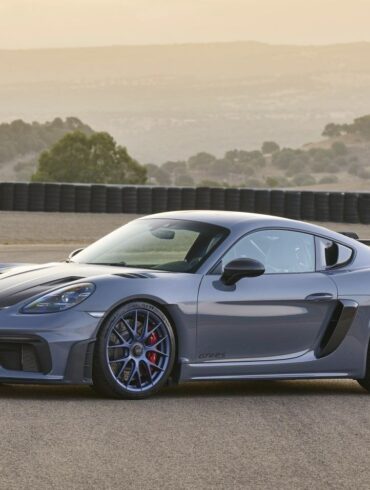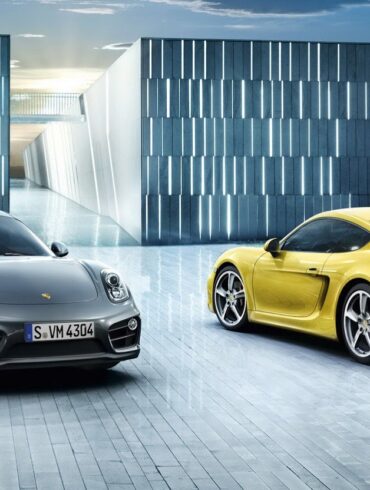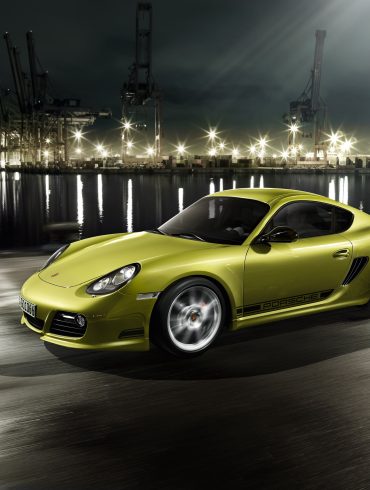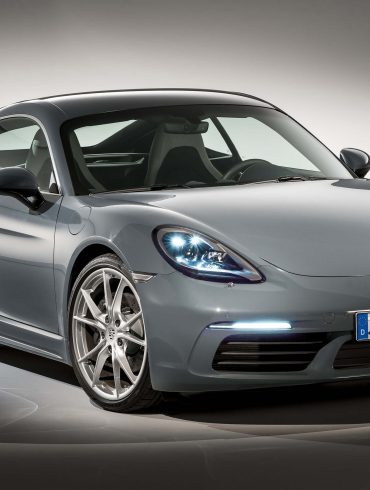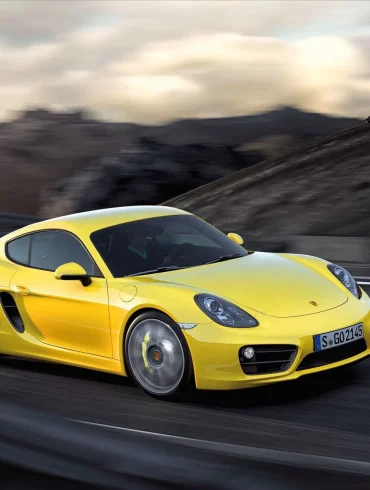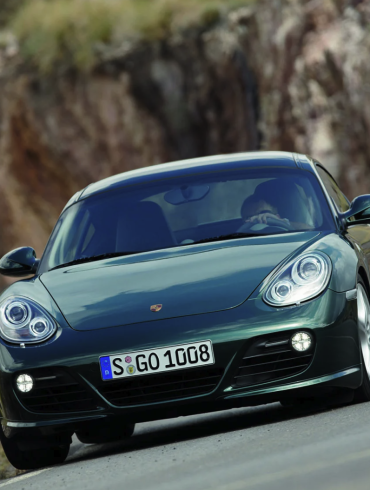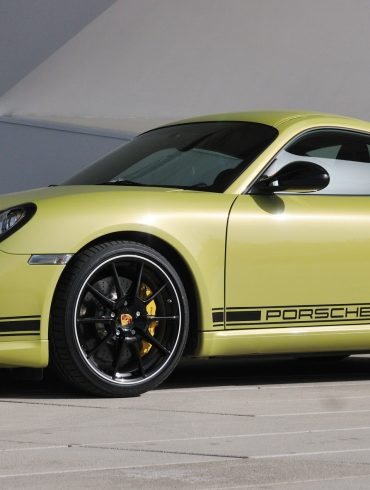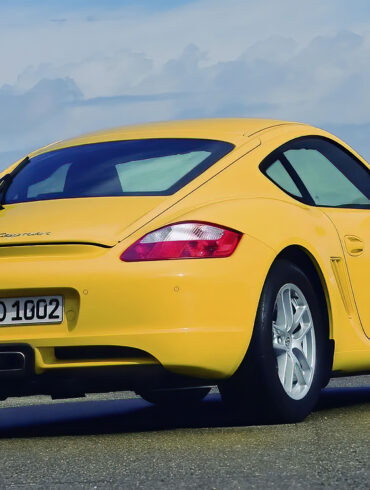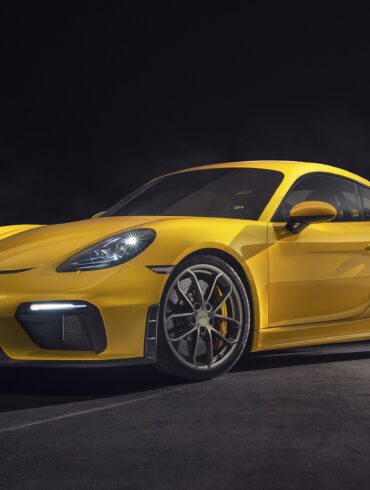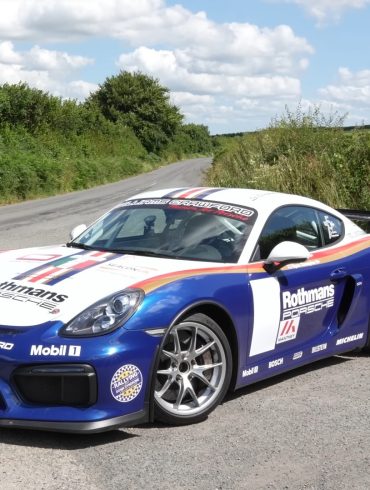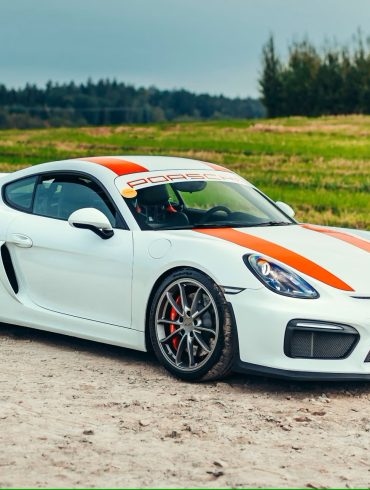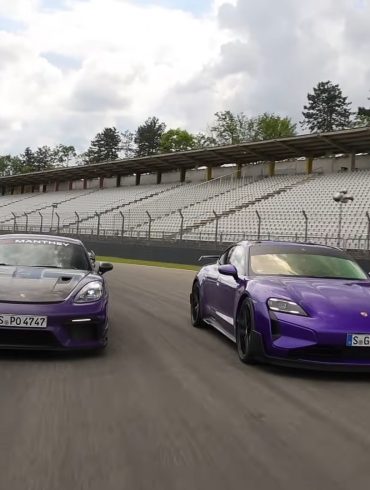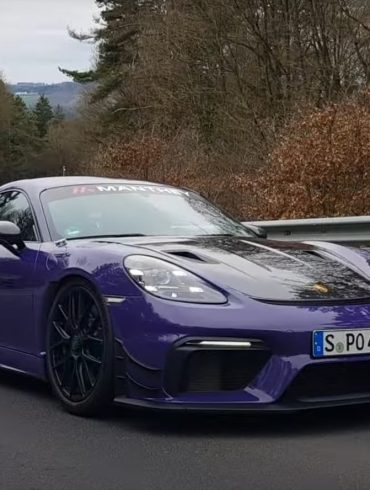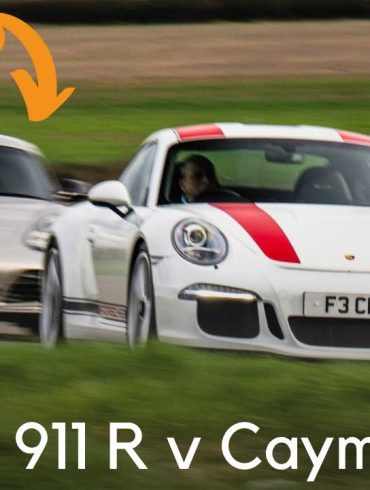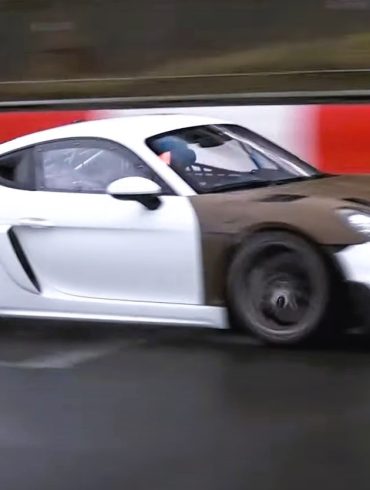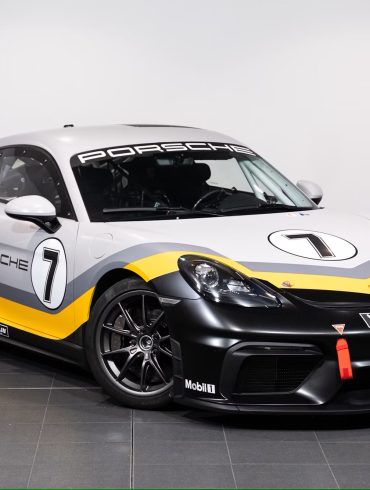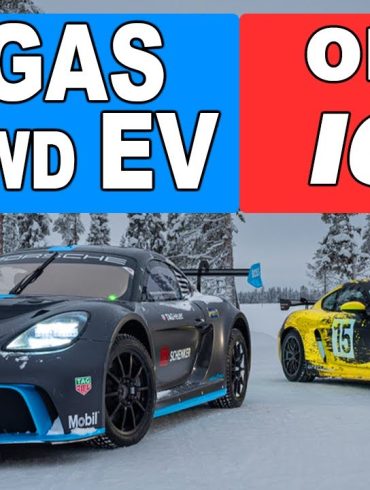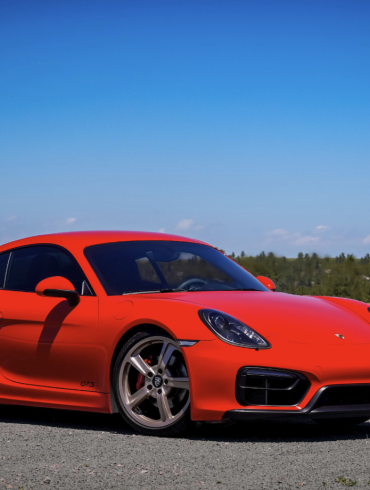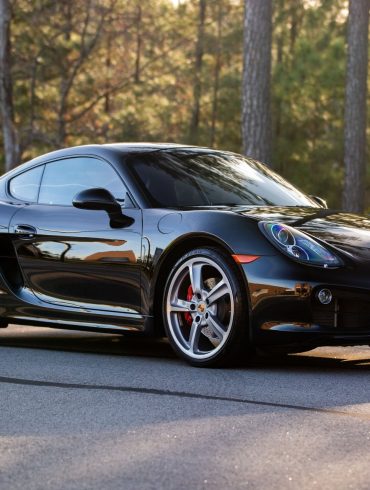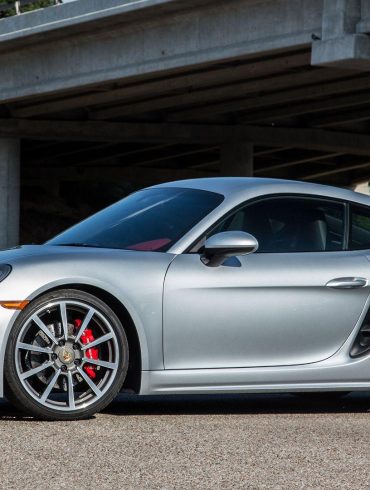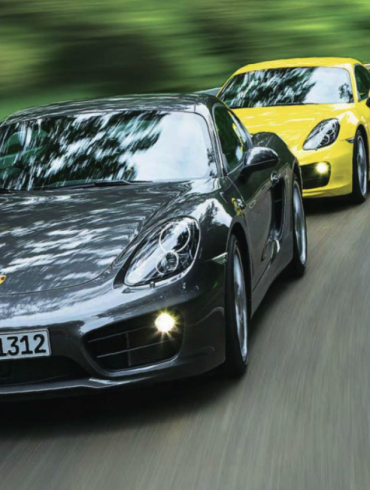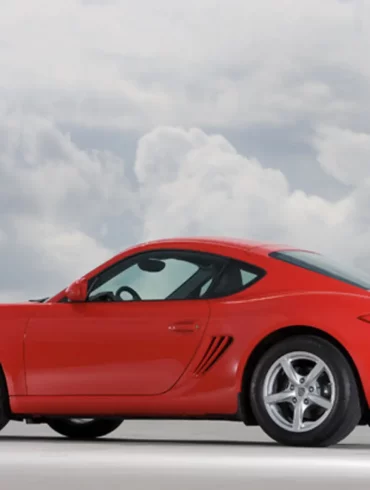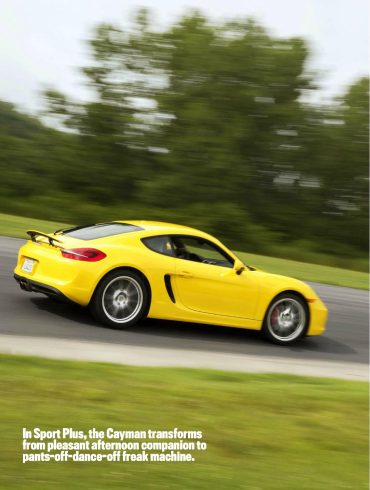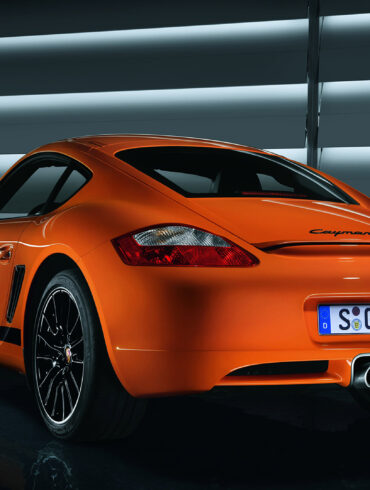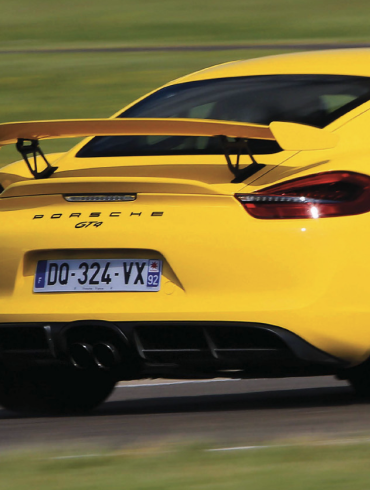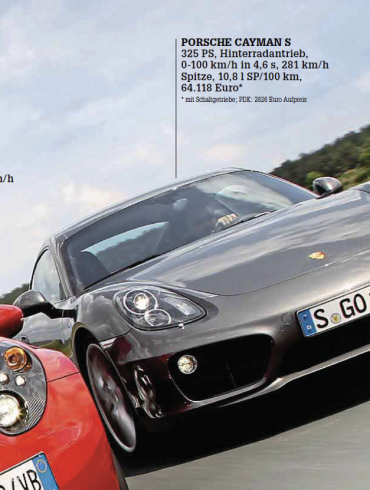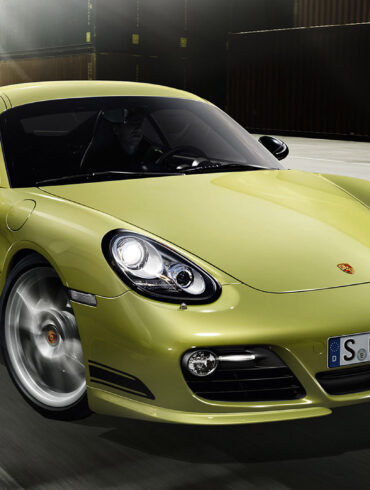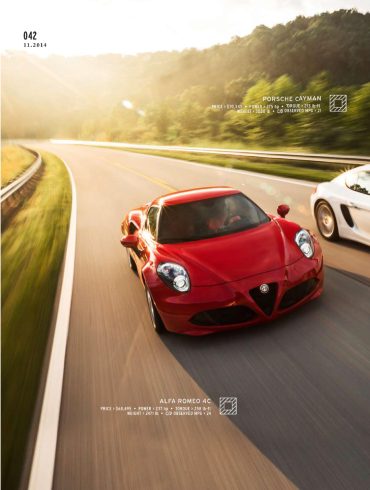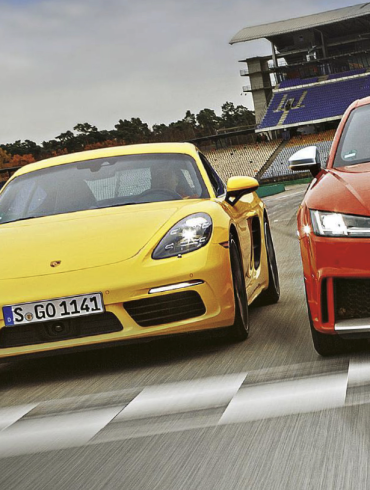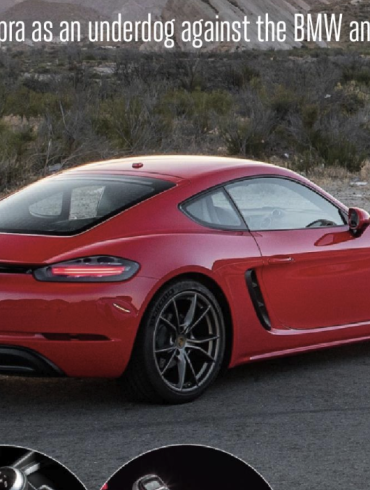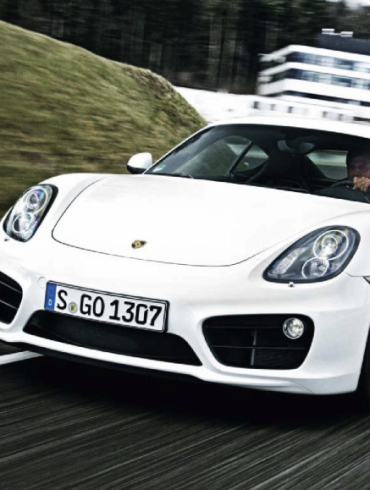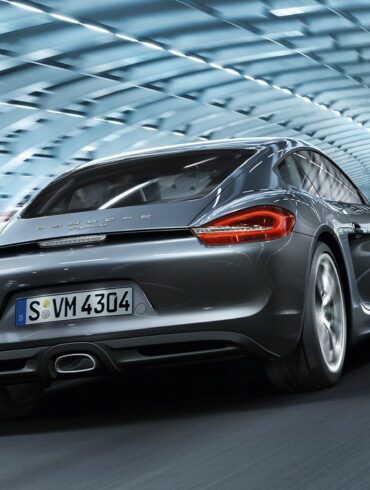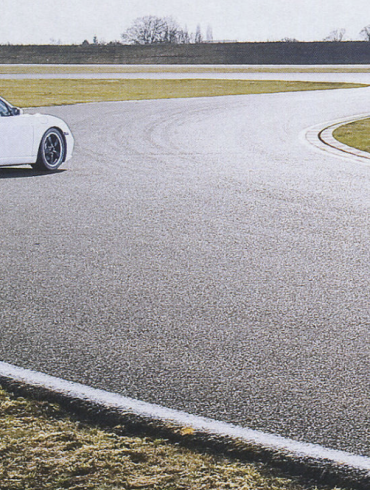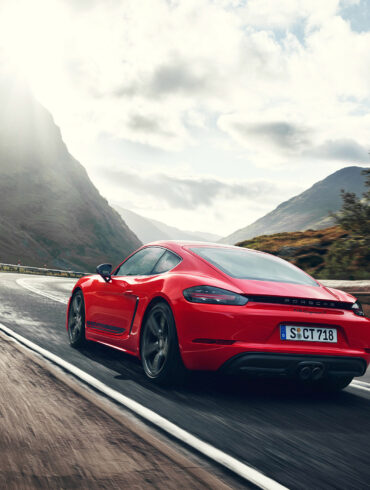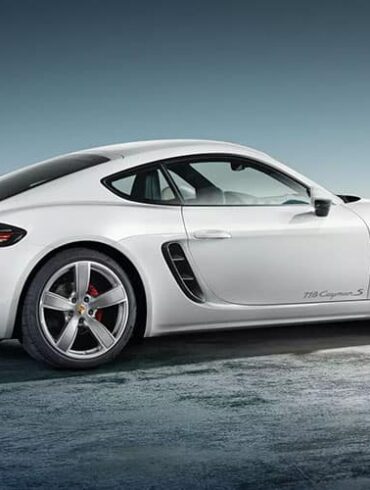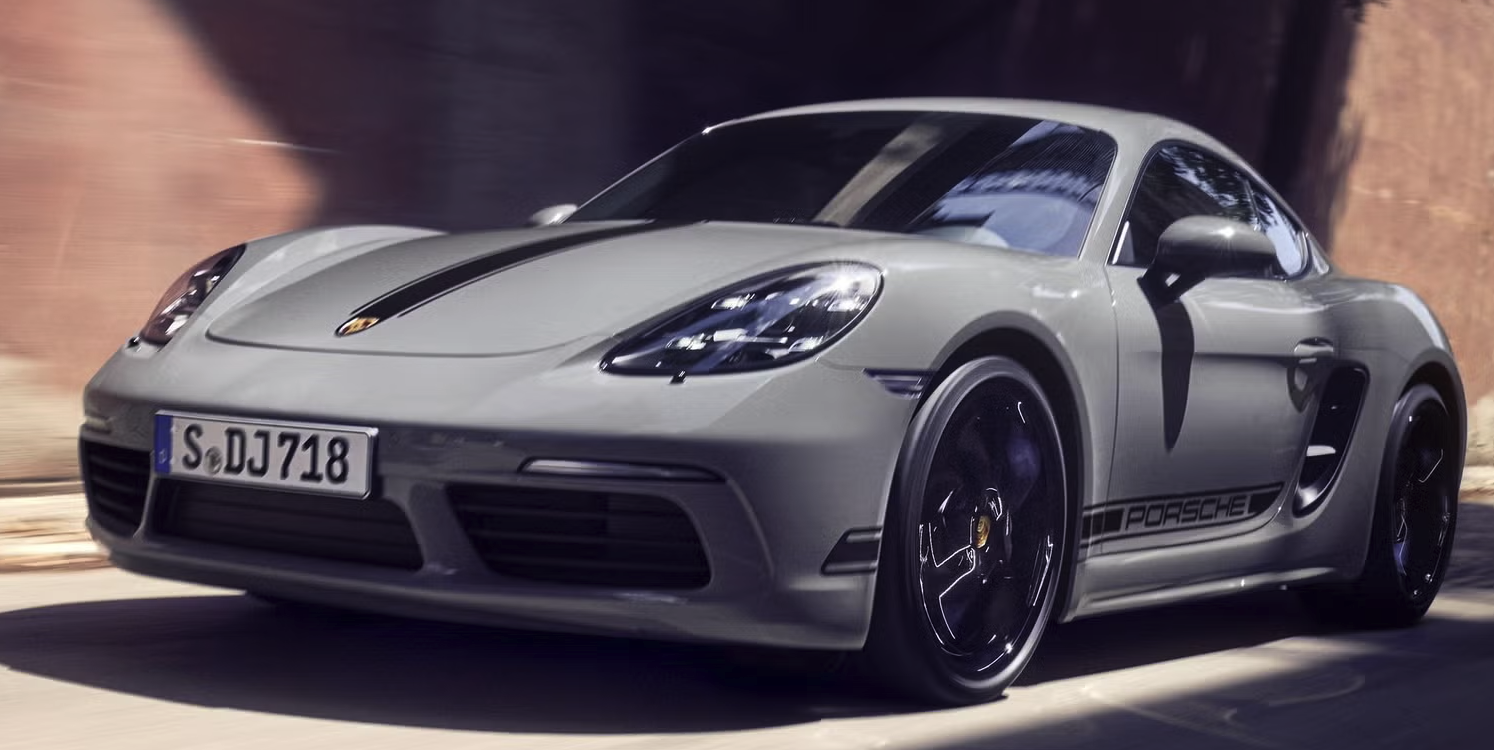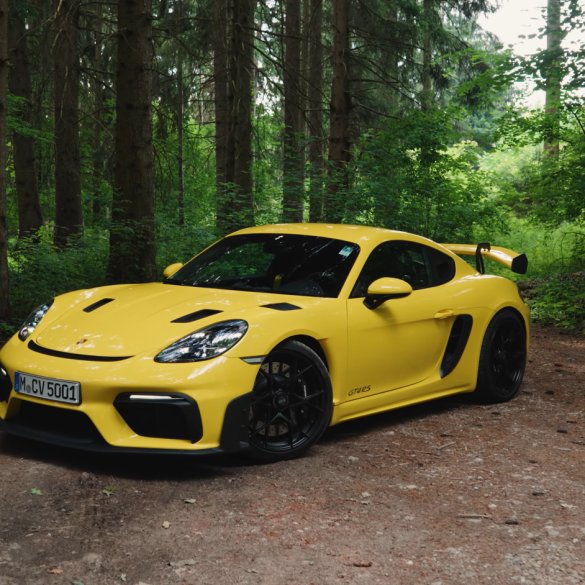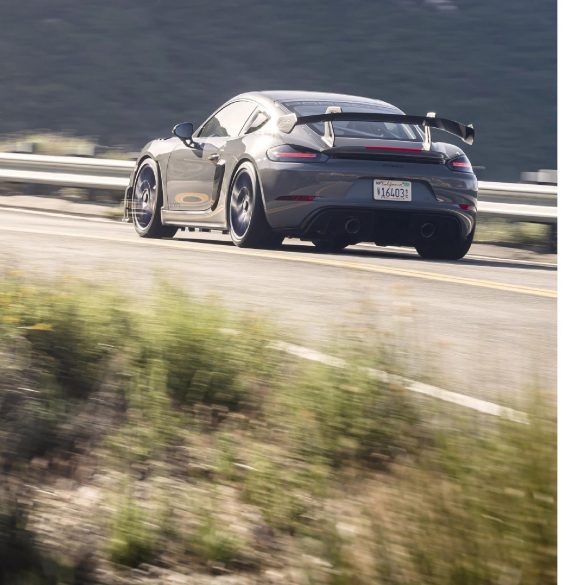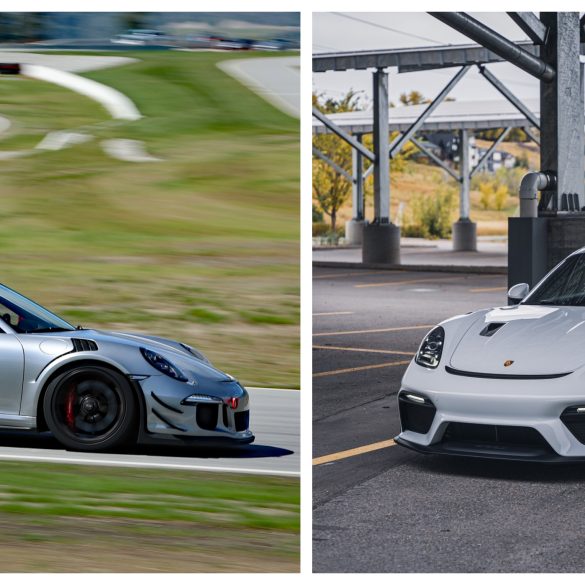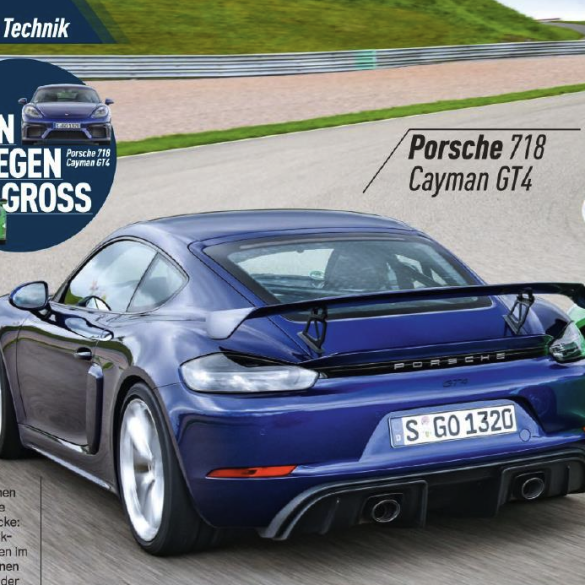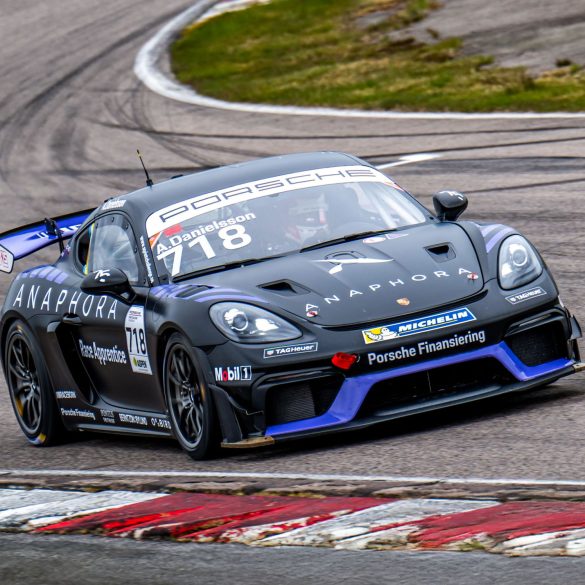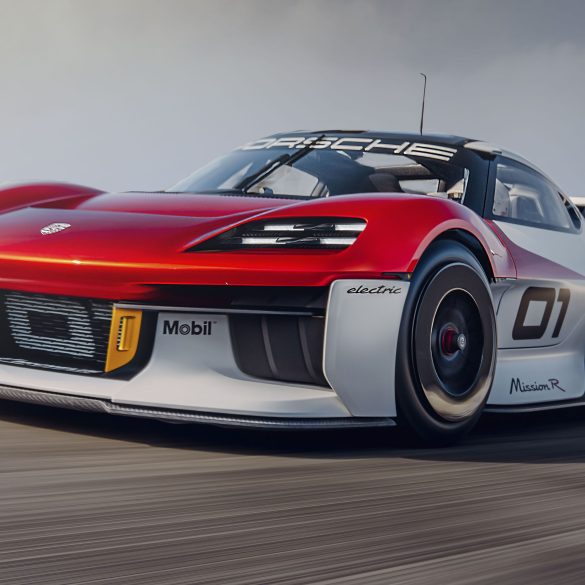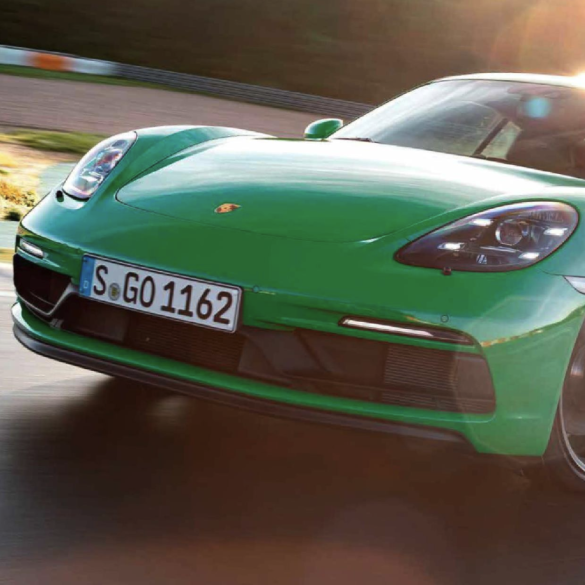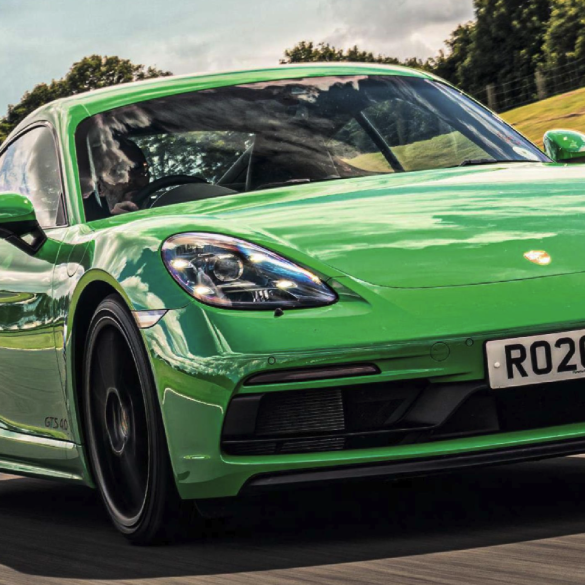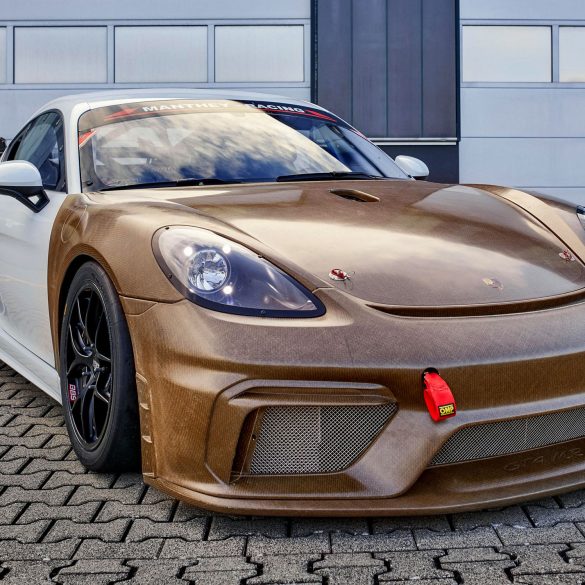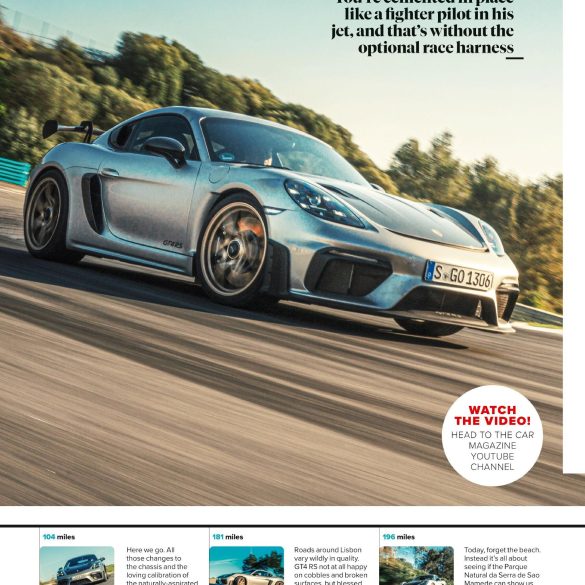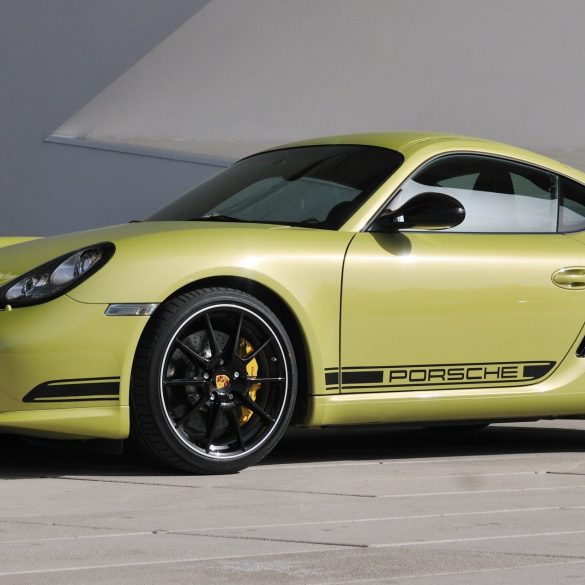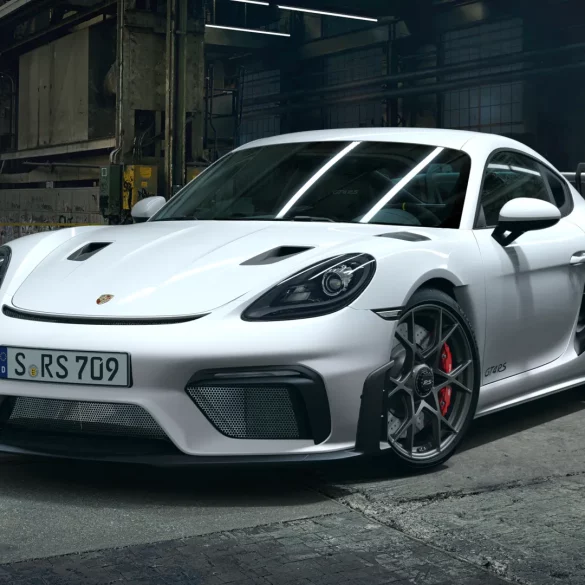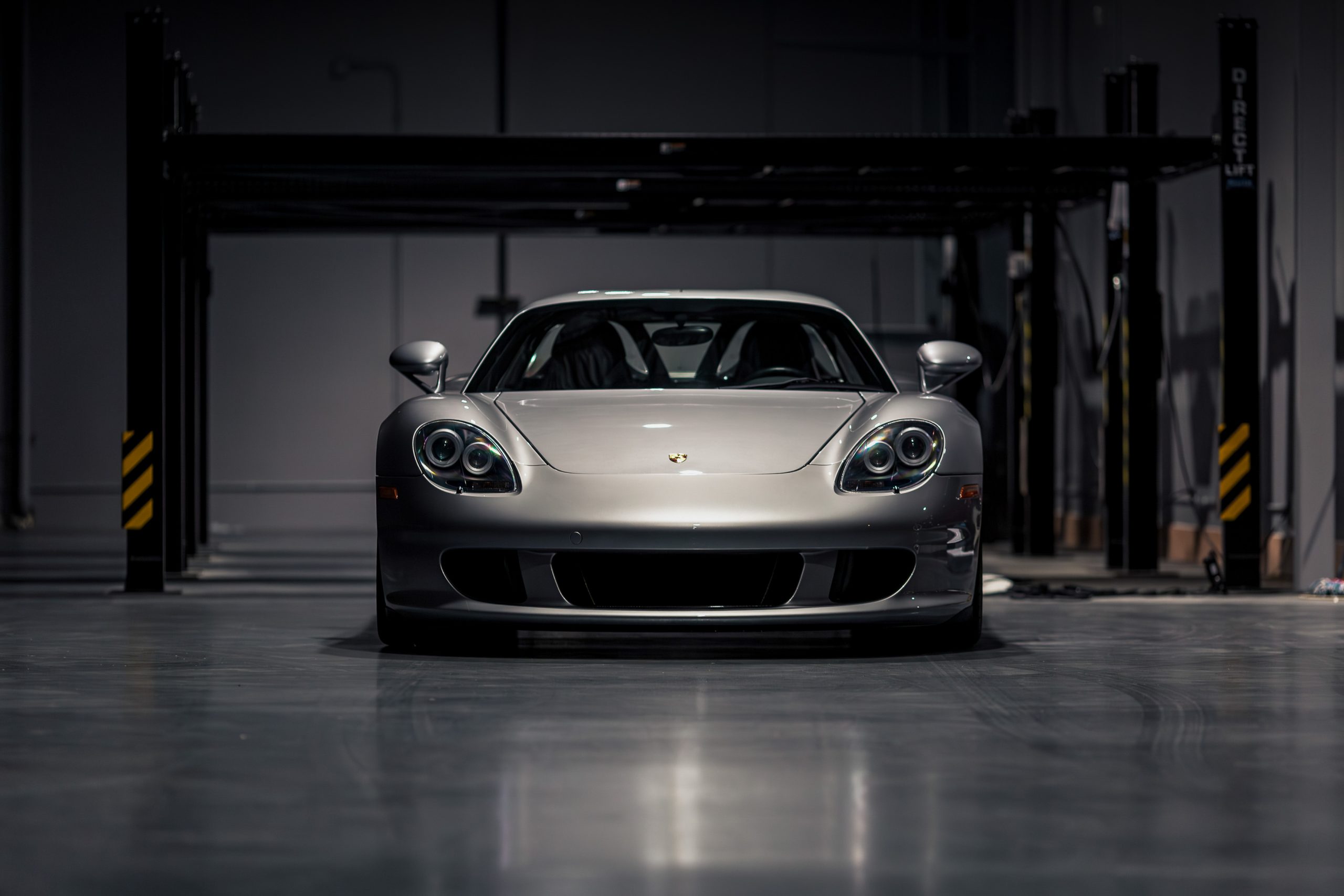Porsche Cayman - The Ultimate Guide
Much More Than a Boxster With A Roof. Every Generation. Every Model. Everything You Ever Wanted to Know
Generations Primer / 2nd Gen / 3rd Gen / 4th Gen / Research / FAQs / Current Lineup / Updates & News
The Cayman S was first unveiled in 2005 and went on sale in late 2005 as a 2006 model year car. A year later, the base Cayman showed up as a 2007 model year car. Both the Cayman and second generation Boxster roadster shared their mid-engine platform and many components. The two cars share the same chassis, with the same wheelbase, width and tracks. Although the sheet metal is different, they share windscreen, doors, cabin and 40 percent of the other components, while the remaining components either come from 911 or are adapted from both cars. The suspension design is fundamentally the same as that of the Boxster with revised settings due to the stiffer chassis with the car's fixed roof. The Cayman S was powered by a 3.4-litre flat-six mated to a 6-speed manual transaxle, a 2.7-litre engine with a 5-speed transmission was standard for the base model. A facelift of the Porsche Cayman came in February 2009. The base Cayman's engine displacement was increased to 2.9-litre while the Cayman S gained direct injection. Both the Cayman and Cayman S maintained a 9 hp power advantage over their roadster sibling, the Boxster.
The 981 Cayman was – and remains – a benchmark car, and when it arrived as a 2013 model year car. It was getting closer to the 911 in terms of desirability and performance. The design was sleeker and more modern than the odd-looking earlier generation and it still looks great today. It got a longer wheelbase, wider tracks and lower overall height. The front and rear views of the 981 stay true to the Cayman with some distinct differences. Beyond these obvious differences in physical dimensions, the body of the 981 uses Porsche's newest weight savings design of mixed steel and aluminum construction. The new interior has very little in common with the original, a worthy update the modernized the inside of the Cayman. The power train of the updated Caymans are probably the single biggest carry over item from the previous model. The 9A1 engine first appeared in 2009 and continued on into the new 981 Caymans. The biggest difference we see in the 981 is that the Cayman engine displacement has been reduced from 2.9 liters back down to 2.7 liters (like it was in 2007). The Cayman S engine displacement was unchanged at 3.4 liters.
Ever-stringent government fuel economy and CO2 emissions standards forced Porsche to downsize and turbocharge its entire range of engines for the 982 generation update. This meant that the marketing department leaned on the flat-four heritage of the 550 Spyder and 718 race cars, dubbing the internally-designated 982 Boxster and Cayman models as the 718. The MA2-based flat-fours of the base and S versions of the Cayman had more varied specifications than any of their predecessors. Porsche fans who missed the howl of a flat-six in a new mid-engined roadster collectively rejoiced with the introduction of the 718 Cayman GT4, which featured an MA2-derived, naturally aspirated 4.0-liter flat-six, which generated 414 hp and revved to 8,000 rpm. This drivetrain reverted to the three-point mounting system of previous six-cylinder Caymans. As expected the Cayman GT4 was an absolutely perfect track-focused car that could also do daily chores if needed. Perhaps the most exciting car in the 982 Cayman generation was the 718 Cayman GTS 4.0. The old GTS used a 2.5-liter turbocharged flat-4, and while it was a perfectly strong engine with lots of low-end torque, it lacked the personality and linear power delivery of a free-breathing flat-six. It didn't sound half as good, either. The GTS 4.0 was built to offer more performance and more grunt as well as a more aggressive design and all the good options included as standard. The new 4.0-liter engine was borrowed from the 718 Spyder and Cayman GT4, detuned to produce 394 horsepower and 309 pound-feet of torque. A 6-speed manual is standard. The GTS 4.0 basically became the perfect daily sports car.
Note: We haven't lost our minds. We are classifying the first generation Cayman as the second generation Cayman on this website. The reason is simple. The Cayman (project 987C) and the second generation Boxster roadster (project 987) shared the same mid-engine platform and many components. Since both the Boxster and Cayman have stated in lockstep since, it made sense to to align generation for the purposes of research. You will see the first generation Cayman referred to as the second generation Cayman throughout this site. It keeps things much neater in following generations.
The Latest Cayman Developments
The era of the internal combustion engine (ICE) Porsche Cayman is drawing to a close. Porsche has officially confirmed that production of the current gasoline-powered 718 Boxster (and its Cayman coupe sibling) is scheduled to cease by October 2025. While a very limited number of units might trickle into showrooms in early 2026, especially in North America, for all intents and purposes, the existing model is on its way out. This discontinuation in most markets follows its earlier retirement from Europe in mid-2024 due to new cybersecurity regulations.
Looking ahead, the Cayman is indeed transitioning to an all-electric future. Porsche has been openly developing fully electric versions of the 718 Boxster and Cayman, which will be built on the new Premium Platform Electric (PPE) architecture, also underpinning models like the Macan EV. The goal is to retain the quintessential Cayman driving dynamics and performance, but with an electric powertrain. Expect options for both rear-wheel drive and more potent all-wheel drive configurations, along with strong horsepower figures that will likely surpass the current base models.
However, the journey to electrification for the Cayman hasn't been without its bumps. The launch of the all-electric Cayman and Cayman has been officially delayed, now expected no sooner than 2027. This postponement is largely due to technical hurdles in battery development and supply chain issues, including the bankruptcy of a key battery manufacturer. Porsche is committed to delivering an electric sports car that lives up to its heritage, and these delays suggest they are taking the necessary time to ensure the electric Cayman meets their rigorous performance and quality standards.
Porsche Cayman Generations
A Primer
Porsche had teased fans with the prospect of a coupe version of the Boxster roadster so it was no surprise when we first saw the Cayman S in 2005, created on the new second generation 987 Boxster platform. The Cayman was epic from day one. The second generation Cayman was unveiled at the 2012 Geneva Motor Show. The Porsche 981 was the internal designation given to the third-generation of the Boxster and second generation of the Cayman. The 981 generation Cayman got a beautiful design update as well as revised engine and transmission specifications. The Boxster and Cayman get more upgrades and made the strong argument that the 911 is no longer the best sports car in the world. The Porsche 982 is the internal designation of the fourth generation Boxster (and third generation Cayman). The big news with the 718 is the switch to a new turbocharged flat-four engine and Porsche moving away from the naturally aspirated flat-6. Don't worry, Porsche relented in the end and gave us a naturally aspirated flat 6 eventually in the form of the Cayman GT4 and then GTS.
2nd Generation Cayman (987) (2006 - 2012)
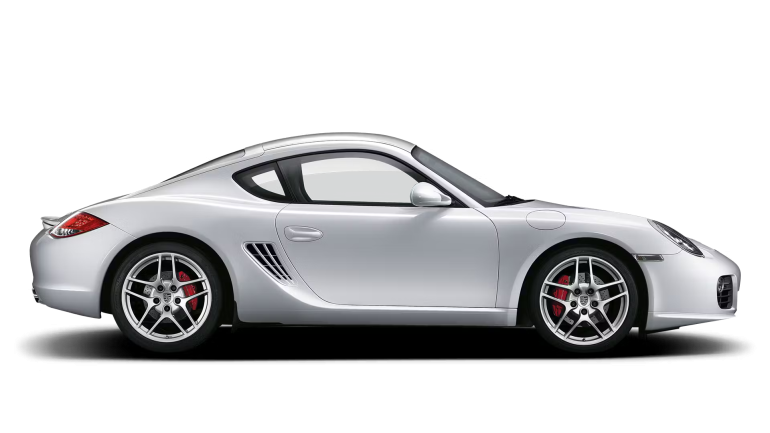
The first-generation Cayman (987) marked Porsche’s bold step into creating a dedicated mid-engine coupe, separate from the 911 and Boxster. Introduced for the 2006 model year, it was essentially a Boxster with a fixed roof and a slightly stiffer, more driver-focused chassis. This additional rigidity sharpened handling and gave the car an edge on track, making it a favorite among enthusiasts who wanted a more precise and balanced Porsche at a lower price point than the 911. The Cayman was positioned as a purist’s sports car, with a naturally aspirated flat-six mounted amidships, giving it near-perfect weight distribution and a character distinct from its rear-engined big brother.
Initially offered in standard and “S” trims, the 987 Cayman produced between 245 and 295 horsepower, depending on the variant, paired with either a 5- or 6-speed manual transmission or a Tiptronic automatic. Porsche enthusiasts immediately appreciated how approachable and communicative it felt, calling it one of the best-handling Porsches in decades. The 2009 facelift (987.2) brought direct fuel injection, new engine options, and the introduction of Porsche’s now-famous PDK dual-clutch transmission, which transformed the car’s speed and everyday usability.
The generation culminated in the Cayman R (2011), a lightweight special that shaved 121 pounds and added extra power, sharper suspension, and a more aggressive stance. This was Porsche’s way of proving that the Cayman wasn’t just an entry-level car — it was a serious sports machine that could stand toe-to-toe with the 911 on a twisty road. Today, the 987 is considered one of the best bargains in Porsche’s lineup, offering analog driving purity and gorgeous, compact proportions.
3rd Generation Cayman (981) (2013 - 2016)
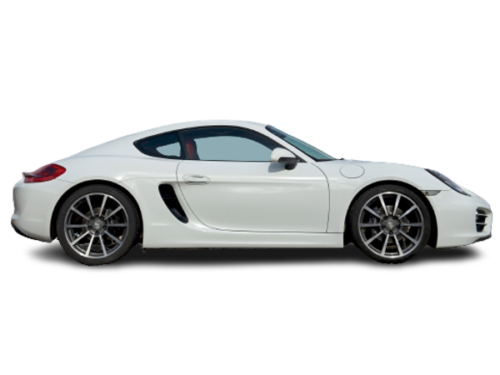
With the second-generation Cayman, Porsche refined the formula and brought the car to a new level of sophistication. The 981 generation arrived for 2013 with a completely redesigned chassis and a longer wheelbase, resulting in a more planted and balanced car that looked sleeker and more muscular. Porsche adopted extensive aluminum construction to shed weight, while also improving interior quality to align the Cayman more closely with the luxury feel of the 911. The cabin gained Porsche’s modern “rising center console” layout, better infotainment, and more customization options, making the car feel more premium and driver-focused.
The engine lineup carried over the naturally aspirated flat-six, now making 275 horsepower in the base Cayman and 325 horsepower in the Cayman S, with PDK-equipped cars reaching 60 mph in as little as 4.4 seconds. The 981 generation had a broader appeal — it was a car you could daily drive comfortably, but it still came alive on twisty back roads or the racetrack. The mid-cycle expansion of the lineup brought the Cayman GTS, a more aggressive and better-equipped model that sat between the S and the future GT4, giving buyers the best all-around version for spirited street driving.
Then, in 2015, Porsche finally gave enthusiasts what they’d been begging for: the Cayman GT4. Featuring a 3.8-liter engine from the 911 Carrera S, a lowered and track-tuned suspension, aggressive aero, and a manual transmission only, the GT4 was a revelation. It instantly became a collector’s favorite and showed what the mid-engine platform was capable of when Porsche pulled out all the stops. Many consider the 981 generation to be the sweet spot in the Cayman lineage — it kept the beloved flat-six sound, delivered a more polished design, and laid the groundwork for the performance explosion of the next generation.
4th Generation 718 Cayman (982) (2017 - 2025)
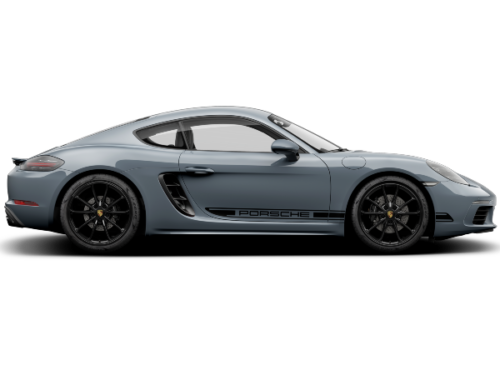
The 982 generation, introduced in 2017, represented a dramatic shift for the Cayman, not just mechanically but philosophically. Porsche rebranded the car as the “718 Cayman” in honor of its 1950s four-cylinder race cars, signaling a return to forced induction. Out went the naturally aspirated flat-sixes in the base and S models, replaced by a pair of turbocharged flat-fours: a 2.0-liter with 300 hp for the base and a 2.5-liter with 350 hp for the Cayman S. This change delivered more torque and improved fuel efficiency, resulting in quicker 0–60 mph times, but it also changed the car’s personality. The sound and character of the flat-four proved polarizing, with some enthusiasts calling it too subdued compared to the wail of the old six.
That said, Porsche used the 982 as an opportunity to further sharpen the Cayman’s dynamics. The steering became even more precise, the chassis more capable, and the technology more advanced with the new PCM 4.0 infotainment system. The mid-cycle updates also added even more options, including the Cayman T, a lightweight, driver-focused model with standard PASM and Sport Chrono that brought back some of the stripped-down purity of the earlier Cayman R. The GTS models initially retained the turbo-four but were later upgraded to the glorious 4.0-liter flat-six, delighting purists and restoring the Cayman’s high-rev soundtrack.
At the top of the range, Porsche unleashed the Cayman GT4 and eventually the GT4 RS, which borrowed the screaming GT3 engine and became the ultimate expression of the mid-engine platform. With up to 493 horsepower and a Nürburgring lap time that rivaled Porsche’s halo cars, the GT4 RS showed that the Cayman had grown far beyond its role as the “junior” Porsche. As 2025 marks the end of internal combustion for the Cayman, the 982 generation stands as the most capable and diverse Cayman lineup ever — from efficient turbo-four daily drivers to track-day monsters with supercar levels of performance.
Porsche Cayman 987 (2nd Generation) Basics
Type: 987C (987.1, 987.2)
Generation: First Generation
Manufacturer: Porsche AG
Production Years: 2006 - 2012
Model Years: 2006 - 2012
Body Style: 2-Door Coupe
Layout: Mid-engine, RWD
Engines: 2.7 L M96.25 / M97.20 flat-6 (2005–2008), 2.9 L M96.26 / MA1.20 flat-6 (2009–2012), 3.2 L M96.26 flat-6 (2005–2006), 3.4 L M97.21 / M97.22 / MA1.21 / MA1.22 flat-6 (2007–2012)
Transmission: 5-speed auto, 5-speed manual, 6-speed manual, 7-speed PDK
Official photos: May 23, 2005
Premiere: September 14, 2005 IAA Frankfurt motor show press day
Market launch: November 26, 2005
The Cayman S was first unveiled in 2005 and went on sale in late 2005 as a 2006 model year car. A year later, the base Cayman showed up as a 2007 model year car. Both the Cayman and second generation Boxster roadster shared their mid-engine platform and many components. The two cars share the same chassis, with the same wheelbase, width and tracks. Although the sheet metal is different, they share windscreen, doors, cabin and 40 percent of the other components, while the remaining components either come from 911 or are adapted from both cars. The suspension design is fundamentally the same as that of the Boxster with revised settings due to the stiffer chassis with the car's fixed roof. They were also assembled at the same place, Finland, by Valmet. Of course, the Cayman got a fixed roof which increased torsional rigidity by an astonishing 150 percent and lowers drag coefficient from the roadster's 0.30 to 0.29.
The Cayman S was powered by a 3.4-litre flat-six mated to a 6-speed manual transaxle, a 2.7-litre engine with a 5-speed transmission was standard for the base model. An electronically controlled 5-speed automatic (Tiptronic) was also available on the S and base models. The Boxster and Boxster S models received a facelift in 2008. Changes included an increase in engine displacement to 2.9-litre for the Boxster, incorporation of Direct Fuel Injection (DFI) for the Boxster S. Both models now came standard with a new 6-speed manual gearbox and were available with a 7-speed Porsche Doppelkupplungsgetriebe (PDK) dual clutch gearbox. Cosmetic changes included new head and tail lights, larger front air intakes with incorporated day time running lights, and an altered lower rear end flanked by twin diffusers.
A facelift of the Porsche Cayman followed in February 2009. As with the Boxster, the base Cayman's engine displacement was increased to 2.9-litre while the Cayman S gained direct injection. Both the Cayman and Cayman S maintained a 7 kW (10 PS; 9 hp) power advantage over their roadster sibling, the Boxster. A limited slip differential was now a factory option.
Porsche Cayman 987 Models
The Cayman S was the first production Cayman model to be released to the public as a 2006 model year offering. It got a 3.4 liter flat six with the heads from the Carrera and the camshafts from the Carrera S. It was good for 295 horsepower and 251 ft-lb's. of torque. The 2007 Cayman delivered most of the Cayman S experience at a substantially lower cost. The chassis and body are nearly identical, with the primary differences being in the power train, brakes, wheels and some minor cosmetic elements. The engine was a mini version of the one in the Cayman S, but with a 2.7 liter displacement and 245 horsepower. Porsche was delivering a facelift and introduced a number of new technologies in 2009, as well as some cosmetic changes too. The body shell and shape remained the same, but the front and rear bumper covers were updated. The engines in the 2009 cars were all new and more advanced. The Cayman engine got a 200 cc boost in displacement bringing total displacement to 2.9 liters producing 265 bhp. The new Cayman S engine doesn't gain any displacement, but thanks to the fewer moving parts and the introduction of Direct Fuel Injection (DFI), this engine produces a hefty 25 more horsepower than the M97.21. In the middle of 2008, Porsche introduced its first 987 Cayman limited edition car, the Design Edition 1. It was a Cayman S packaged with many exclusive cosmetic options intended to commemorate the 35th anniversary of Porsche Design. In late 2008, Porsche introduced the limited edition Cayman S Sport, a Cayman S packaged with many sport options and a new DME software map to work with the Porsche Sport Exhaust, boosting the car to 303 horsepower. The Cayman R was the highlight of the special edition 987 Cayman models and is arguably one of the best driving Porsche cars ever made. It was all about reducing weight while adding performance where possible. In all, Porsche cut 121 lbs. (55 kg) in weight and was also given more performance by adding power, suspension tuning and other performance upgrades that do not require weight be added back to the vehicle. With 330 brake horsepower and some tuned suspension and stiffer springs and dampers and the R was an absolute revelation to drive.
Porsche Cayman 981 (3rd Generation) Basics
Type: 981C (981)
Generation: Second Generation
Manufacturer: Porsche AG
Production Years: 2012 - 2016
Model Years: 2013 - 2016
Body Style: 2-Door Coupe
Layout: Mid-engine, RWD
Engines: 2.7 L MA1.22 flat-6, 3.4 L MA1.23 flat-6, 3.8 L MA1.24 flat-6
Transmission: 6-speed manual, 7-speed PDK
Official photos: November 28, 2012, GTS March 19, 2014
Premiere: November 28, 2012 at Los Angeles Auto Show, GTS April 20, 2014 at Auto China in Beijing
Market launch: March 2, 2013 (as a 2014 model), GTS 2014 May
The 981 Cayman was – and remains – a benchmark car, and when it arrived as a 2013 model year car. It was getting closer to the 911 in terms of desirability and performance. The design was sleeker and more modern than the odd-looking earlier generation and it still looks great today. It got a longer wheelbase, wider tracks and lower overall height. The front and rear views of the 981 stay true to the Cayman with some distinct differences. The headlights become slightly sharper and more square. The air intakes up front are also sharper and somewhat more aggressive with new LED array daytime running lights filling the round fog lamp openings. In the rear there is a new wider aero wing that integrates into the taillights to deliver a smooth uninterrupted body line.
Beyond these obvious differences in physical dimensions, the body of the 981 uses Porsche's newest weight savings design of mixed steel and aluminum construction. Aluminum makes up 44% of the 981's chassis, including the front and rear body, floors, doors, and front and rear trunk lids. Despite the fact that this body uses less steel than its predecessor, its torsional rigidity has been increased by 40% while chassis weight has gone done by 100 pounds, resulting in a gross vehicle weight loss of 66 pounds. The 981 sits on larger wheels than the 987 Cayman, with 18 inch wheels standard on the Cayman, 19 inch standard on the Cayman S and optional 20 inch wheels available on both. These wheels are fitted with new improved tires that provide 7% less rolling resistance than those available on a 2013 Cayman, resulting in better efficiency. Longer wheelbase, wider track, less weight, bigger wheels and higher torsional rigidity are sure to deliver improved driving performance.
The new interior has very little in common with the original. We're dealing with a clean sheet of paper here and it looks great. The center console is higher with the sifter that's much closer to the steering wheel. The dash top is flatter, further away and the Sport Chrono stopwatch is recessed nicely into the dash top, eliminating the wart that drew so much criticism in the 987s. Controls are made up of many high quality push buttons logically located around the interior and able to give instant access without menus or drill downs, the way all sports cars controls should be. The door panels are new, modern, elegant and very Carrera GT. The door's storage pockets swing out now, replacing the armrest doors of the 987. They offer a bit less storage than the 987 door pockets, so a little storage has been added in front of the door pockets and on the sides of the center console. The steering wheel tilt and telescopic controls are now electric, making it possible for the wheel to move in and up during exit and for the system to memorize different driving positions.
The instrument cluster is similar to the 987 cluster in the fact that it displays 3 round gauges to the driver, but that's where the similarity ends. The new 981 cluster has a color LCD display in the right and left sides making it possible to display far more information. For the first time since 1997, Porsche has given a sports car other than the 911 an oil pressure and oil temperature gauge, (though displayed digitally without an analog gauge), once again addressing complaints about prior versions.
The power train of the 2014 Caymans are probably the single biggest carry over item from the previous model. The 9A1 engine first appeared in 2009 and continued on into the new 981 Caymans. The biggest difference we see in the 981 is that the Cayman engine displacement has been reduced from 2.9 liters back down to 2.7 liters (like it was in 2007). But before you cancel your order or jump to the S model take notice that the new smaller Cayman engine actually makes 10 horsepower more than the big brother it has replaced, producing 275 horsepower and propelling the new Cayman from 0-60 mph in as little as 5.1 seconds - actually faster than a 2006 Cayman S while delivering 32 mpg on the highway (when equipped with PDK and Sport Chrono Plus).
The Cayman S engine displacement is unchanged at 3.4 liters. Power is increased by 5 horsepower to 325, shooting the S from 0-60 mph in just 4.4 seconds while delivering as much as 30 miles per gallon (PDK & Sport Chrono+). There are two transmissions choices available in the 2014 Caymans, both carrying over from 2013. The Cayman and Cayman S come standard with the 6 speed manual gearbox, which means the 5 speed manual has officially been retired. The 7 speed PDK is available as an option in either model.
Porsche Cayman 981 Models
The Cayman S benefitted from the same engine and running gear as Porsche's latest 3.4-litre version of the 911 while the base Cayman a 2.7-litre engine. The Cayman GTS was introduced in 2014 and it got a slightly more powerful engine, a new body kit, new 20-inch Carrera S wheels, new Bi-Xenon headlights, and a new sports exhaust system. In 2015, the ultimate track oriented version of the Cayman was launched and it was an instant hit. The Cayman GT4 had a revised and a slightly de-tuned version of the 3.8-litre flat-six engine from the 911 (991) Carrera S. The GT4 was available only with a 6 speed manual transmission and weighed 1,340 kg, and had a number of track-focused options and hardware changes. On 6 October 2015, Porsche announced a racing version of the Cayman GT4 called the Cayman GT4 Clubsport. As opposed to the road going Cayman GT4, the Clubsport version is fitted with Porsche's PDK double clutch transmission. For testing purposes Porsche Motorsport built a few tarmac rally cars based on the Cayman 981 GT4 racing version. The Cayman rally car was the course car for the WRC (World Rally Championship) 2018 ADAC Rallye Deutschland. The FIA R-GT Cup was contested on tarmac rounds of the ERC and WRC, like the German WRC event.
Porsche 718 Cayman 982 (4th Generation) Basics
Type: 982
Generation: Third Generation
Manufacturer: Porsche AG
Production Years: 2016 - Present
Model Years: 2017 - Present / Body Style: 2-Door Coupe
Layout: Rear mid-engine, rear-wheel-drive layout
Engines: 2.0 L MA2.2 turbo flat-4, 2.5 L MA2.22 turbo flat-4, 4.0 L MDG naturally aspirated flat-6
Transmission: 6-speed manual, 7-speed PDK
Official photos: Apr 24 2016, GTS 4-cylinder Oct 18 2017, GTS 6-cylinder Jan 16 2020
Premiere: 2016 April 25 at Auto China
Market launch: September 2016, GTS 4-cylinder December 2017, GTS 6-cylinder March 2020
Ever-stringent government fuel economy and CO2 emissions standards forced Porsche to downsize and turbocharge its entire range of engines. This meant that the marketing department leaned on the flat-four heritage of the 550 Spyder and 718 race cars, dubbing the internally-designated 982 Boxster and Cayman models as the 718. The MA2-based flat-fours of the base and S versions of the Cayman had more varied specifications than any of their predecessors. The 2.0-liter MA2/20 of the base model had a turbocharger with a conventional internal wastegate for boost control, while the 2.5-liter, 350-hp MA2/22 of the Cayman S had a variable turbine geometry turbocharger in addition to a conventional internal wastegate to reduce exhaust backpressure.
Porsche fans who missed the howl of a flat-six in a new mid-engined roadster collectively rejoiced with the introduction of the 718 Cayman GT4, which featured an MA2-derived, naturally aspirated 4.0-liter flat-six, which generated 414 hp and revved to 8,000 rpm. This drivetrain reverted to the three-point mounting system of previous six-cylinder Caymans. As expected the Cayman GT4 was an absolutely perfect track-focused car that could also do daily chores if needed. Perhaps the most exciting car in the 982 Cayman generation was the 718 Cayman GTS 4.0. The old GTS used a 2.5-liter turbocharged flat-4, and while it was a perfectly strong engine with lots of low-end torque, it lacked the personality and linear power delivery of a free-breathing flat-six. It didn't sound half as good, either. The GTS 4.0 was built to offer more performance and more grunt as well as a more aggressive design and all the good options included as standard. The new 4.0-liter engine was borrowed from the 718 Spyder and Cayman GT4, detuned to produce 394 horsepower and 309 pound-feet of torque. A 6-speed manual is standard. The GTS 4.0 basically became the perfect daily sports car.
Porsche chassis engineers always find incremental improvements between generations of model lines, and the 982 was no exception. While the 982 was an evolution of the 981 Cayman design and shared most of its body and chassis construction and layout with its predecessor, there were optimizations in every area of the suspension system to improve response and feel. The 982 retained the three-link strut rear suspension design, which has been cited by the erstwhile Porsche engineer and 718/982 project manager August. Achleitner as one of the main engineering reasons that Porsche has never produced a true 911 rival based on the current mid-engine platform-there simply isn't room for a proper multi-link rear suspension design.
Porsche 718 Cayman 982 Models
The 718 Cayman was introduced in April 2016, and premiered at the 2016 Geneva Motor Show. The 718 featured two new horizontally-opposed flat-4 turbocharged engines at 2.0-litre (Boxster/Cayman) and 2.5-litre (Boxster S/Cayman S) displacement with increased torque and horsepower with lower fuel consumption. The S model turbocharger utilizes Variable Turbine Geometry (VTG) technology. The 718 T models were released for the 2020 model year as more sport-oriented versions of the base 718 models. Later in October 2017, the GTS models were announced with their 2.5-litre engines rated at 360 hp. Since 2020, the GTS 4.0 model has been offered for both 718 models. The new model features the 4.0-litre flat-6 from the Cayman GT4 and Boxster Spyder, however de-tuned to 394 hp. Like with its predecessor, the Cayman gets a motorsport version. The car's name is again very long and rather confusing. The official marketing names are "718 Cayman GT4 Clubsport Trackday version" and "718 Cayman GT4 Clubsport Competition version". Neither of them is street legal, something a "Clubsport" used to stand for in the past. The base version is called "Trackday" which used to be the synonym for club sport anyway. The 17% more expensive Competition variant is a real racer made for national and international racing events. Most of the cars will naturally be sold in the Competition trim as for a track day you typically want a street legal car. Many track day organizers demand a street legal car.
Cayman Pictures, Galleries & Videos
The Cayman has always been a great looking car and dynamically spectacular.
Cayman Research & Data Hub
Dive into the Porsche Cayman treasure trove, a comprehensive archive packed with detailed specifications, production data, factory documents, engineering drawings, sales brochures, research materials, and much more, offering an in-depth look at this iconic mid-engined sports car.
Porsche Cayman FAQs
When did Porsche first launch the Cayman?
Porsche first launched the Cayman in late 2005 as a 2006 model. It debuted at the 2005 Frankfurt Motor Show as a mid-engined coupé that sat between the Boxster and the 911 in Porsche’s lineup. Based on the Boxster platform but with a fixed roof and a slightly more rigid chassis, the Cayman was designed to offer sharper handling and a more focused driving experience while still being more affordable than a 911.
The first generation, internally known as the 987C, was initially offered as the Cayman S with a 3.4-liter flat-six engine producing 295 hp. A more affordable base Cayman with a 2.7-liter engine followed in 2006. The model quickly gained a reputation for its sublime balance and driving purity, becoming a favorite among enthusiasts looking for a precision sports car that was both usable and thrilling.
Why did Porsche decide to make the Cayman? How it is impact its financial future?
Porsche created the Cayman to slot between the Boxster and 911, giving buyers a mid-engined coupe with sharper handling and a lower entry price than a 911. It used much of the Boxster’s platform, keeping development costs low while offering a more rigid chassis and more focused driving dynamics. Financially, it was a smart move. The Cayman broadened Porsche’s sports car lineup, attracted new customers, and delivered strong margins thanks to shared parts. Alongside the Cayenne SUV, it helped Porsche become one of the most profitable carmakers in the world and ensured a steady stream of future 911 buyers.
What are the different Porsche Cayman models?
The Porsche Cayman lineup has evolved through three generations, each offering a range of trims to suit different drivers. Here’s a clear breakdown:
First Generation – 987C (2006–2012) The Cayman debuted with the Cayman (2.7L flat-six) and Cayman S (3.4L flat-six), later adding special editions like the Cayman R, a lighter, sharper, more track-focused version, and the Cayman S Black Edition.
Second Generation – 981C (2013–2016) Porsche redesigned the Cayman with a longer wheelbase, new styling, and improved performance. Models included the base Cayman, Cayman S, and Cayman GTS, which offered extra power and standard sport upgrades. The ultimate version of this generation was the Cayman GT4, featuring a 3.8L engine from the 911 Carrera S and major chassis upgrades.
Third Generation – 982 / 718 Cayman (2017–present) Renamed the 718 Cayman, this generation introduced turbocharged flat-four engines in the Cayman and Cayman S. Later, Porsche added the Cayman GTS 4.0, bringing back a naturally aspirated flat-six, and the Cayman GT4 and GT4 RS, the most hardcore versions with track-ready performance. There’s also the 718 Cayman T, a purist’s model with lightweight options and driver-focused features.
What do Porsche Cayman chassis codes mean?
Porsche’s chassis codes are shorthand for each generation of Cayman and help enthusiasts, buyers, and mechanics quickly identify the car’s platform, design era, and mechanical setup. Here’s a breakdown of what they mean for the Cayman:
987 (2006–2012) This was the first-generation Cayman, based on the second-generation Boxster platform (also called 987). The Cayman’s internal codes are often written as 987C, where the “C” stands for Cayman. This generation included the Cayman, Cayman S, and special models like the Cayman R.
981 (2013–2016) This was the second-generation Cayman and represented a major redesign. The chassis code 981C again uses “C” to denote Cayman, and this generation introduced more refined styling, a new interior, a longer wheelbase, and more powerful naturally aspirated flat-six engines.
982 / 718 (2017–Present) With the third generation, Porsche rebranded the Cayman as the 718 Cayman, a nod to Porsche’s four-cylinder race cars of the 1950s–60s. The chassis code is 982C. This generation initially used turbocharged flat-four engines but later reintroduced naturally aspirated sixes in the GTS 4.0 and GT4.
So, when you see a Cayman listed as 987, 981, or 982, it’s simply identifying which generation and
What are the major differences between the 987, 981, and 982 generation Cayman?
The three Cayman generations each represent big steps forward in design, technology, and driving experience, and knowing the key differences helps you quickly tell them apart.
987 Cayman (2006–2012) The first-generation Cayman (987C) introduced Porsche’s mid-engined coupe formula. It shared much of its chassis, suspension, and engines with the Boxster but added the rigidity and style of a fixed roof. The 987’s look is rounded and compact, with a more classic early-2000s Porsche aesthetic. Power came from naturally aspirated flat-six engines (2.7L or 3.4L), and it was available with a 5-speed/6-speed manual or Tiptronic (later PDK). Special editions like the Cayman R and Cayman S Black Edition sharpened the formula.
981 Cayman (2013–2016) The second generation (981C) was a major evolution. The chassis grew longer and wider, improving stability and cabin space. The styling became sleeker, with sculpted side intakes, a more aggressive front end, and a modernized interior borrowed from the Panamera and 911. Engines remained naturally aspirated flat-sixes but were more powerful and efficient, and Porsche switched fully to electric power steering. Performance options like PASM (adaptive suspension), Sport Chrono, and torque vectoring became more common, and the Cayman GTS and GT4 gave enthusiasts serious performance upgrades.
982 / 718 Cayman (2017–present) The third generation (982C), rebranded as the 718 Cayman, was the most controversial change: turbocharged flat-four engines replaced the NA sixes in the base and S models, giving more torque and efficiency but a different sound and character. Porsche also sharpened the chassis, improved steering feel, and upgraded infotainment tech. Later, Porsche reintroduced naturally aspirated flat-sixes in the GTS 4.0, GT4, and GT4 RS, which have become enthusiast favorites. Design-wise, the 718 has a wider stance, more angular headlights, and a more aggressive overall look.
What engines are available in the Cayman over the years?
You can see how the lineup evolved from naturally aspirated flat-sixes to turbocharged fours and back again for the high-performance models:
First Generation – 987C (2006–2012)
Cayman: 2.7L naturally aspirated flat-6 (245 hp → 265 hp after 2009 refresh)
Cayman S: 3.4L naturally aspirated flat-6 (295 hp → 320 hp after 2009 refresh)
Cayman R: 3.4L naturally aspirated flat-6 (330 hp, lightweight & track-focused)
This generation used the M97 flat-six engines early on, switching to the newer 9A1 direct-injection flat-sixes after the 2009 facelift, bringing a nice bump in power and reliability.
Second Generation – 981C (2013–2016)
Cayman: 2.7L naturally aspirated flat-6 (275 hp)
Cayman S: 3.4L naturally aspirated flat-6 (325 hp)
Cayman GTS: 3.4L naturally aspirated flat-6 (340 hp, sportier calibration)
Cayman GT4: 3.8L naturally aspirated flat-6 (385 hp, derived from 991 Carrera S)
All engines were from the 9A1 family, offering smoother power delivery, better emissions control, and improved reliability compared to the 987.
Third Generation – 982 / 718 Cayman (2017–Present)
718 Cayman: 2.0L turbocharged flat-4 (300 hp)
718 Cayman S: 2.5L turbocharged flat-4 (350 hp, with VTG turbo)
718 Cayman GTS (pre-2020): 2.5L turbocharged flat-4 (365 hp)
718 Cayman T: 2.0L turbocharged flat-4 (300 hp, lightweight spec)
718 Cayman GTS 4.0 (2020+): 4.0L naturally aspirated flat-6 (394 hp)
718 Cayman GT4: 4.0L naturally aspirated flat-6 (414 hp)
718 Cayman GT4 RS: 4.0L naturally aspirated flat-6 (493 hp, GT3-derived engine, 9,000-rpm redline)
The 982 generation started with turbocharged four-cylinders, which boosted torque and efficiency but drew mixed reviews for sound and character. Porsche later brought back six-cylinder options in the GTS 4.0 and GT4 variants, which are now considered the sweet spot for enthusiasts.
What’s the best Cayman for the money?
987 Cayman S (2009–2012) The late first-generation Cayman S is one of the best budget-friendly entries into Porsche’s mid-engined sports car world. The post-2009 facelift brought a more powerful 3.4-liter direct-injection flat-six (320 hp) and ditched the earlier engines’ IMS bearing concerns, making these cars more robust long-term. They still have hydraulic steering, which many enthusiasts say provides the most natural feel of any Cayman, and they can be had with a six-speed manual for the purist experience. Prices remain reasonable, depreciation is mostly done, and they deliver that classic flat-six wail without the higher costs of newer cars.
981 Cayman S (2013–2016) If you can stretch a bit more, the 981 Cayman S hits the perfect balance between modern refinement and old-school Porsche character. It has a stiffer, wider chassis, better interior quality, and improved tech, yet still uses a naturally aspirated flat-six. With 325 hp (340 in GTS form) and a screaming 7,400-rpm redline, this generation is one of the most emotionally satisfying to drive. The steering switched to electric assist but remains highly praised for accuracy, and options like PASM and Sport Chrono make it a superb daily driver or weekend canyon carver. It’s new enough to feel modern, but not so new that it carries a massive price premium.
718 Cayman GTS 4.0 (2020–Present) For those who want the ultimate modern Cayman without going to GT4 or GT4 RS money, the 718 GTS 4.0 is the sweet spot. It brings back the naturally aspirated 4.0-liter flat-six, producing 394 hp and offering a manual gearbox for one of the most engaging sports car experiences on the market. It combines everyday usability with near-GT4 performance, has Porsche Active Suspension Management (PASM) as standard, and features an interior that feels properly premium. Its collectible potential is strong because it represents the return of the six-cylinder in the Cayman lineup and is likely one of the last NA engines before electrification.
718 Cayman S (2017–2019) If your budget doesn’t reach GTS 4.0 territory, the 718 Cayman S offers excellent value. Its 2.5-liter turbocharged flat-four makes 350 hp and a massive 309 lb-ft of torque, which makes it quicker than the 981 Cayman S despite losing two cylinders. It’s more efficient, newer, and often comes with updated infotainment and convenience features. While some enthusiasts lament the loss of the flat-six sound, the performance and handling more than make up for it — and it’s a great daily driver that still feels special.
981 Cayman GT4 (2016) If you want a Cayman that’s destined to be a collectible, the 981 GT4 is the one to get. This was the first time Porsche let the Cayman truly shine with a 3.8-liter 911 Carrera S engine, GT3-derived suspension, and a six-speed manual as the only transmission. With 385 hp, it’s a raw, track-focused car that delivers one of the best driver’s cars experiences Porsche has ever built. Prices have risen as enthusiasts recognize its significance, but it still represents strong value for what is effectively a baby GT3 with a mid-engine layout.
Which Cayman model years should I avoid?
While Caymans are generally reliable, there are a few model years and issues that buyers should approach carefully:
Early 987 Cayman (2006–2008) The first-generation Cayman (987C) introduced Porsche’s mid-engine coupe magic, but the early 2006–2008 cars came with the M97 flat-six engines that can suffer from IMS bearing failures (intermediate shaft), bore scoring, and rear main seal leaks. These issues aren’t guaranteed to occur but can be very costly to fix if they do. If you’re shopping one of these, look for documented IMS bearing upgrades (or cars built after the factory switch to the stronger design in mid-2008) and get a pre-purchase inspection that includes a bore-scope of the cylinders.
High-Mileage, Poorly Maintained Cars (All Generations) Regardless of model year, neglect is the biggest killer of Cayman reliability. Skipped oil changes, missed cooling system service, and worn suspension components can lead to big bills. Because Caymans are relatively affordable used, some have passed through owners who deferred maintenance — avoid bargain-bin cars with incomplete service history, as they often cost more to bring back to proper spec.
Early 718 Cayman (2017) While generally reliable, the first model year of the 718 Cayman had some reported teething issues with early turbocharged flat-four engines (wastegate rattle, turbo-related fault codes) and infotainment glitches. Most were addressed under warranty, but it’s worth looking for a 2018+ car if you want to minimize first-year quirks — or at least verify that any recalls and software updates were completed.
Special Note: Track-Used GT4s and GT4 RS These aren’t “years to avoid” per se, but if you’re buying a GT4 or GT4 RS, check for excessive track use. Hard use isn’t bad if the car was properly maintained, but consumables like brakes, tires, and even engines on track-driven cars can have much higher wear. Look for service records, borescope results (for GT4 4.0L engines), and proof of regular fluid changes.
Join Our Porsche Community
Sign up for our weekly Porsche newsletter. The latest Porsche news, rumors, reviews and more delivered to your inbox. Cool Porsche stuff perfect for the flat-six obsessed.


